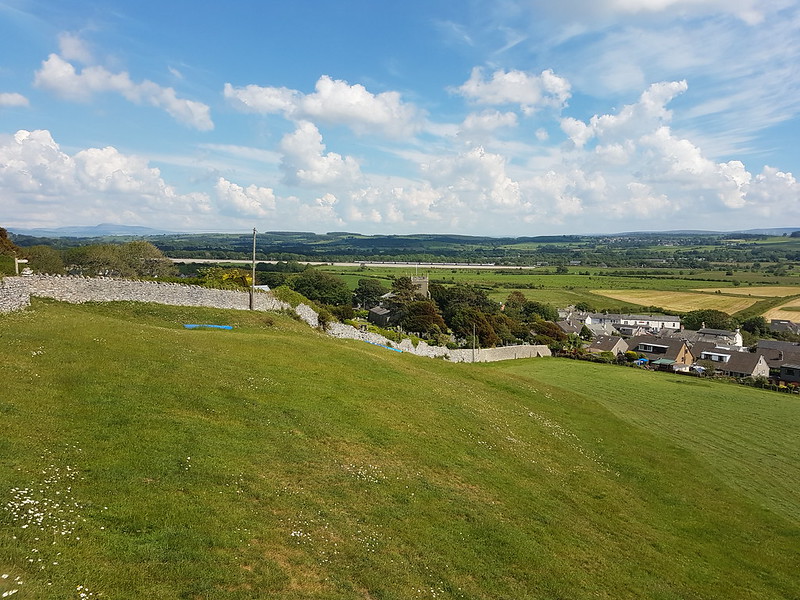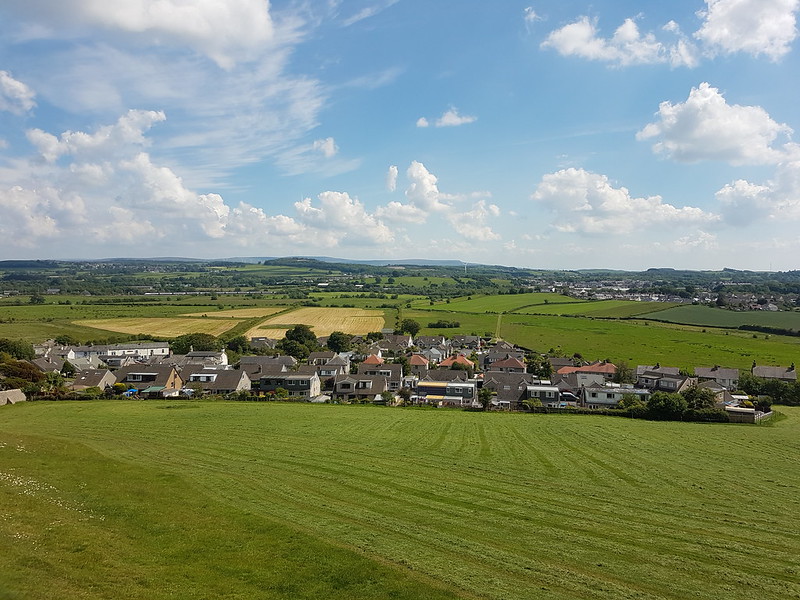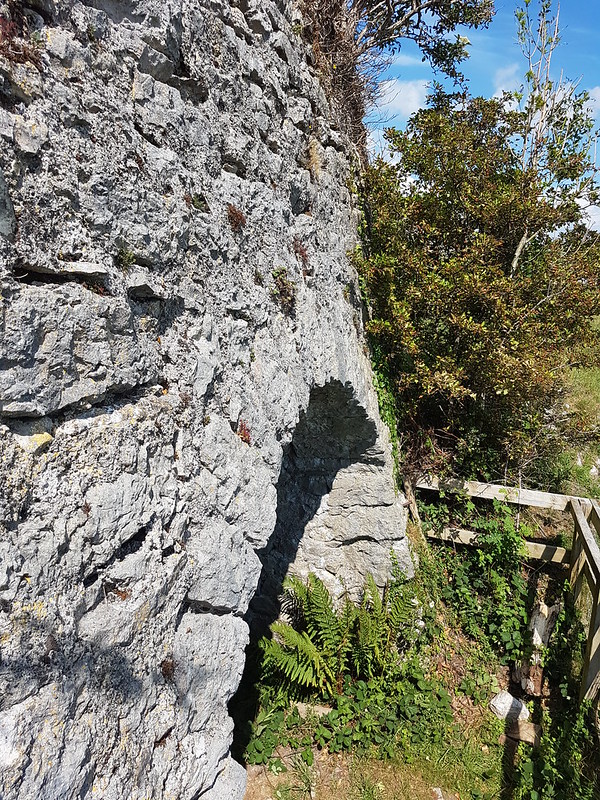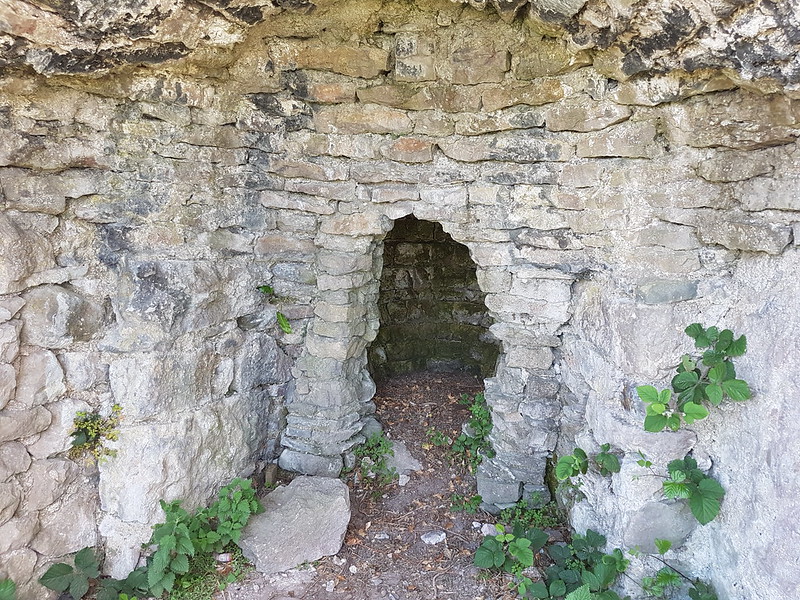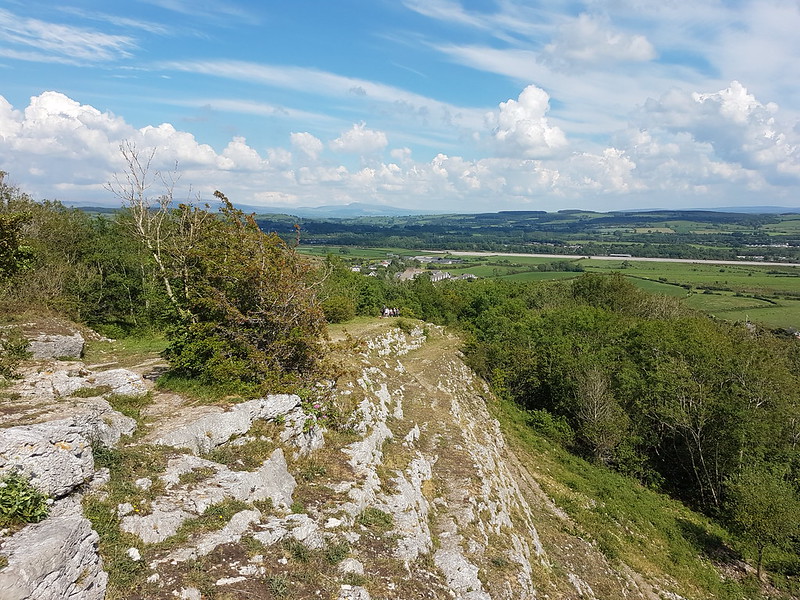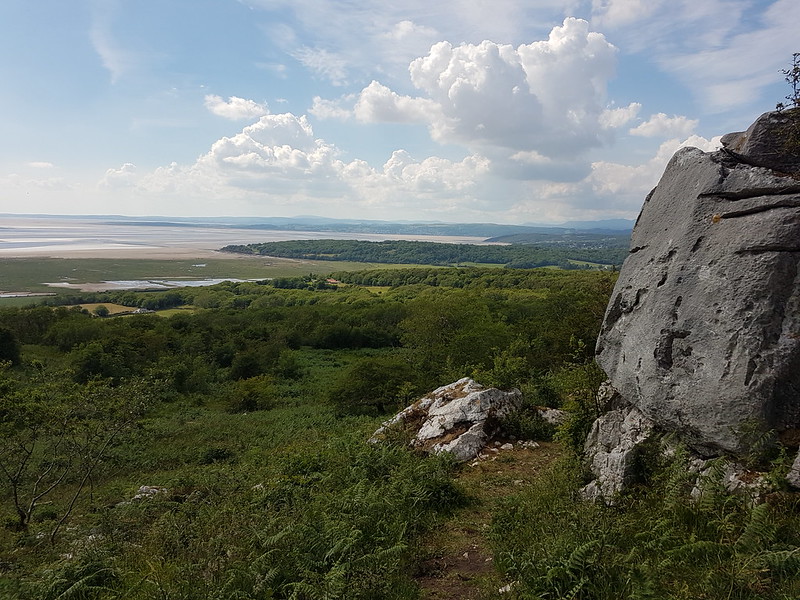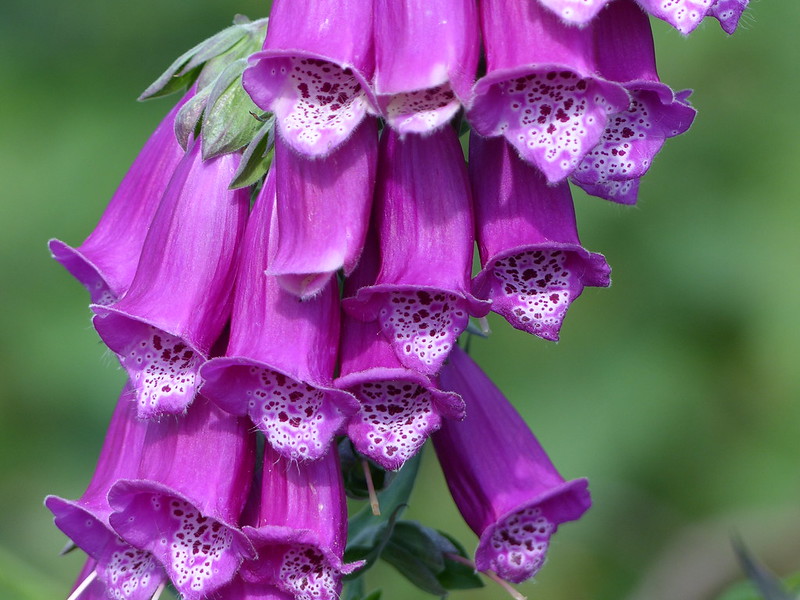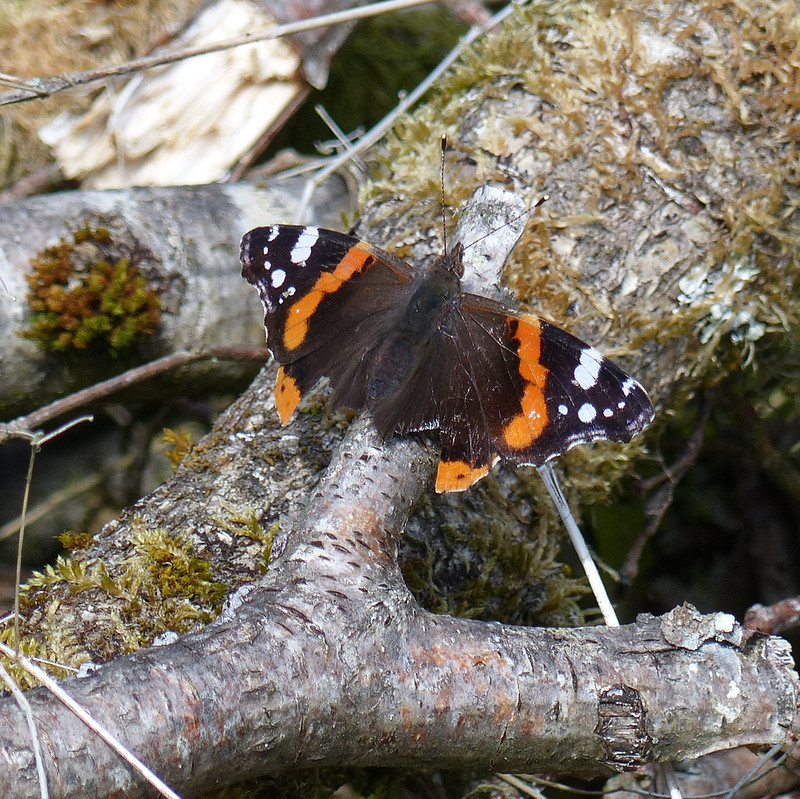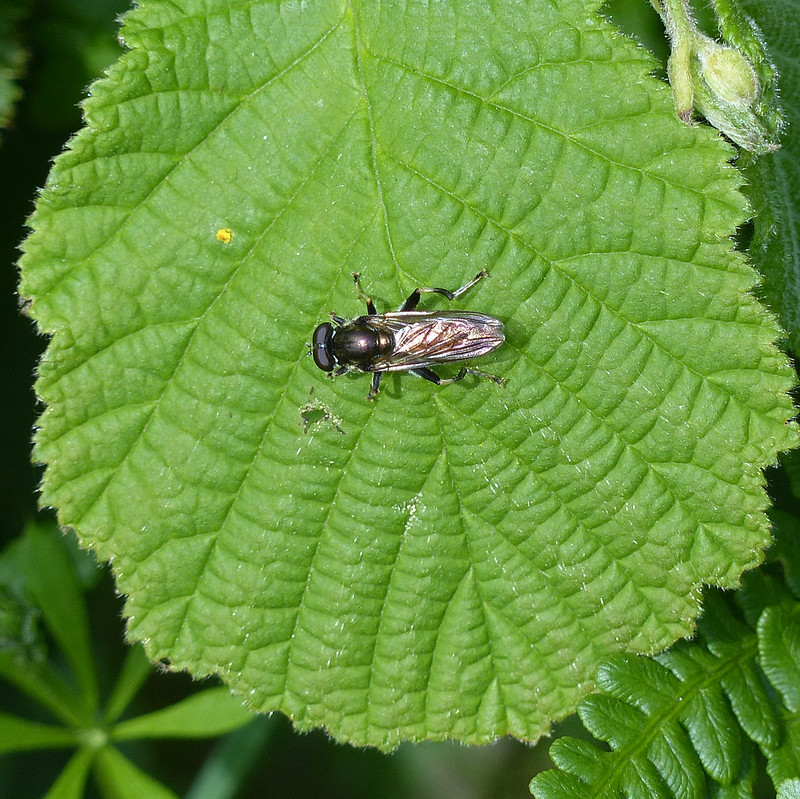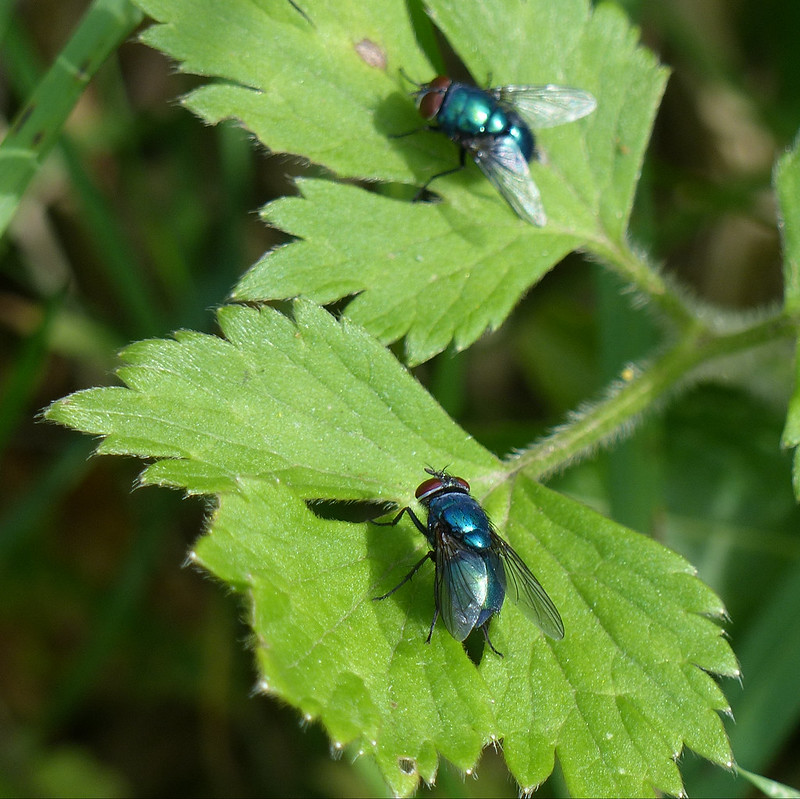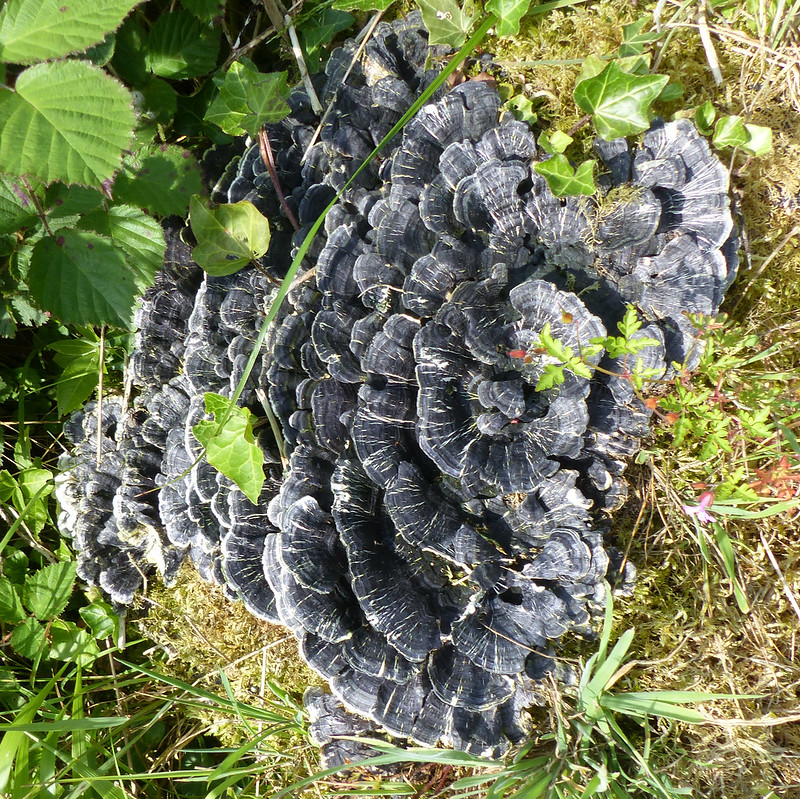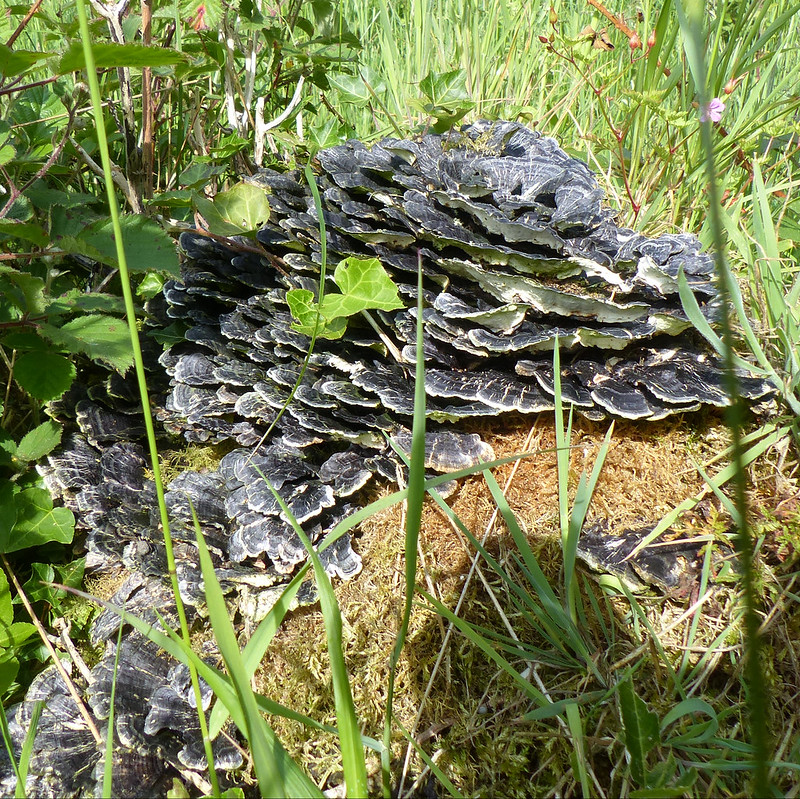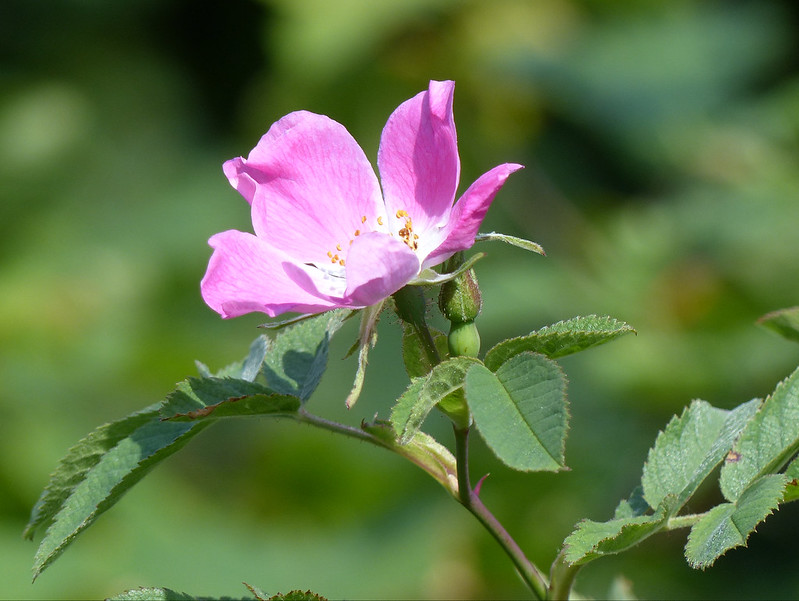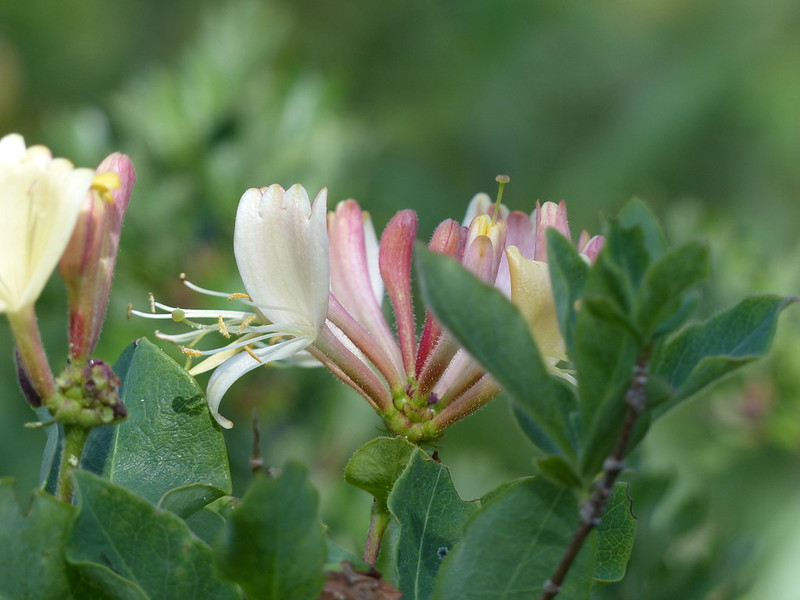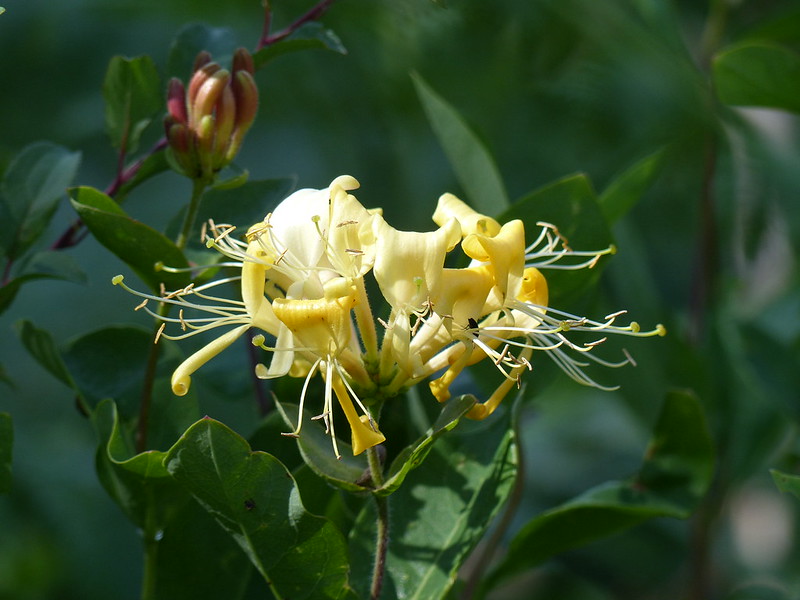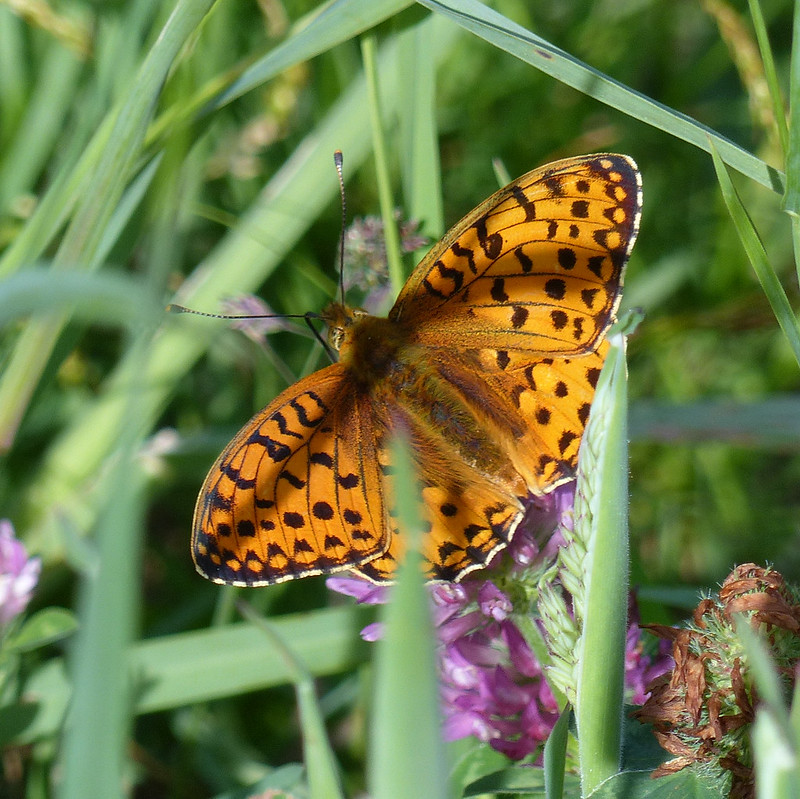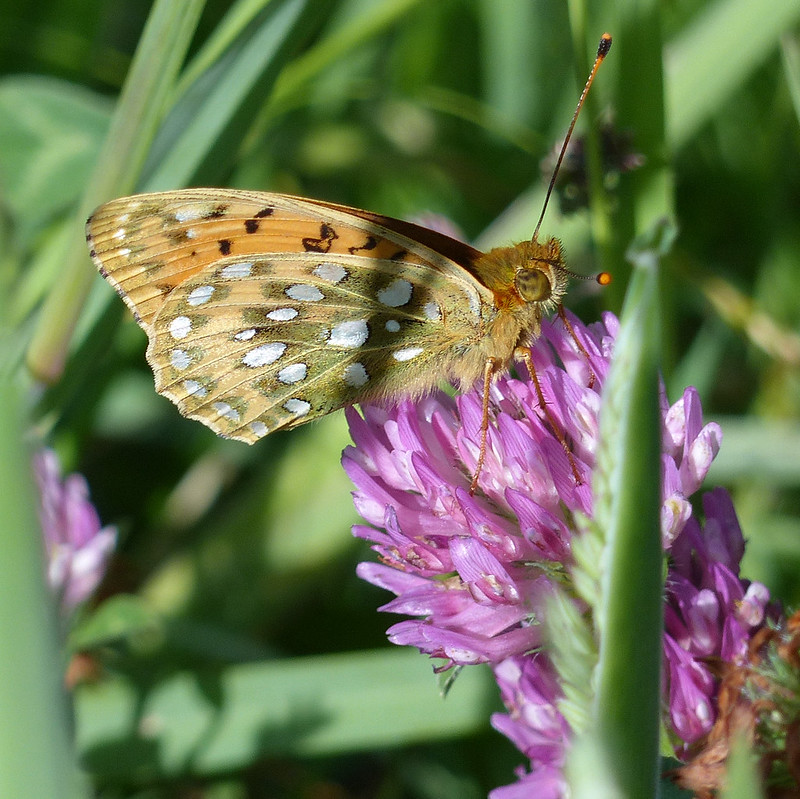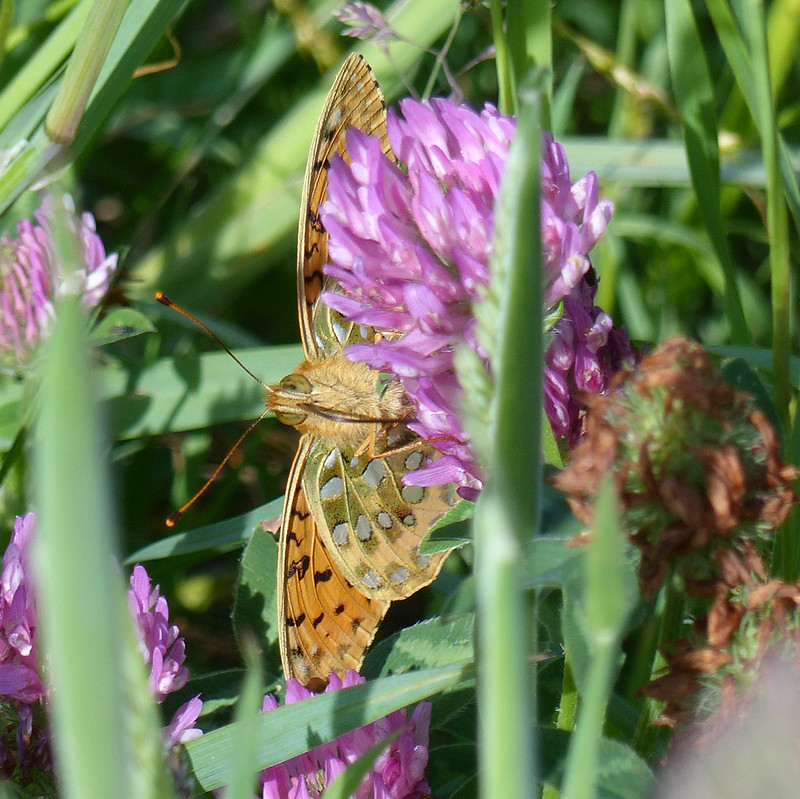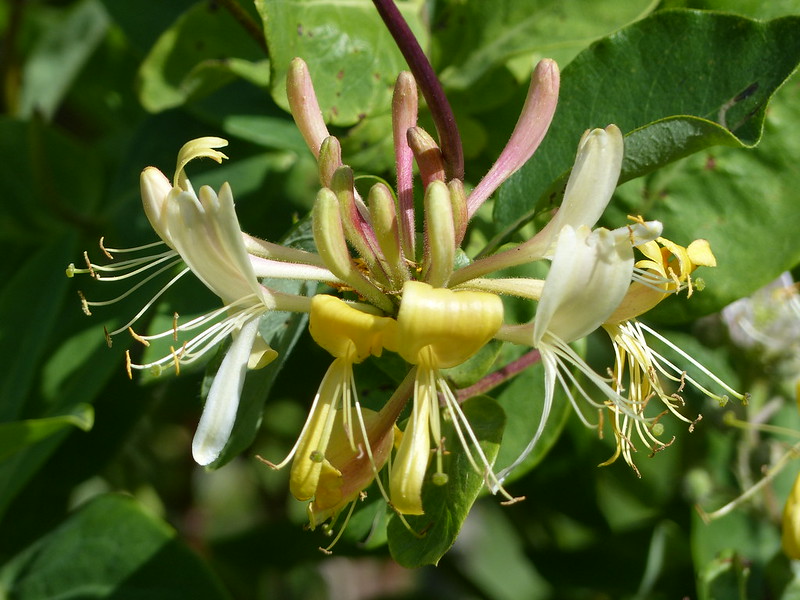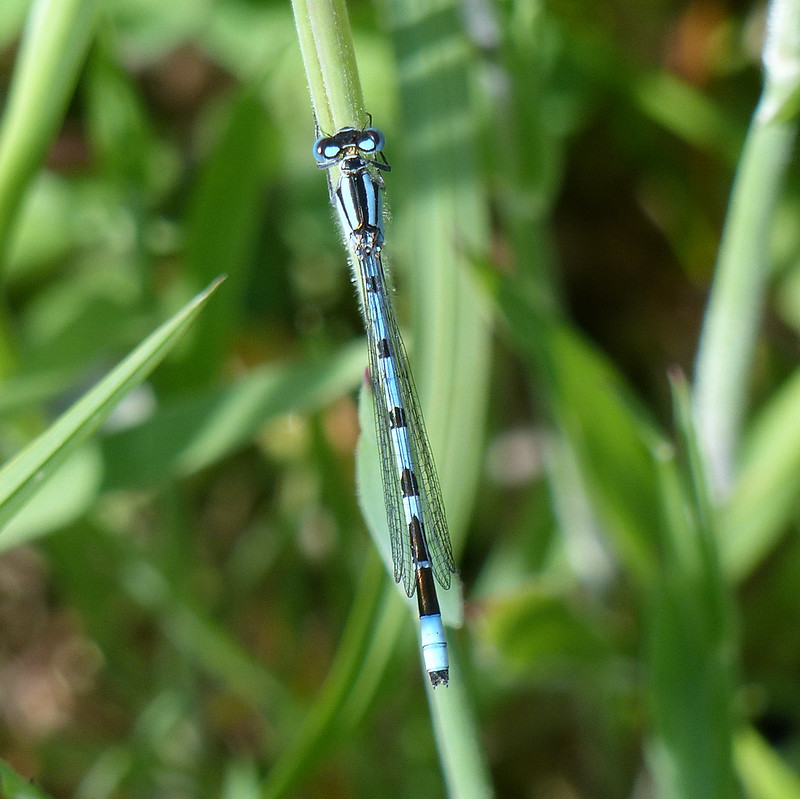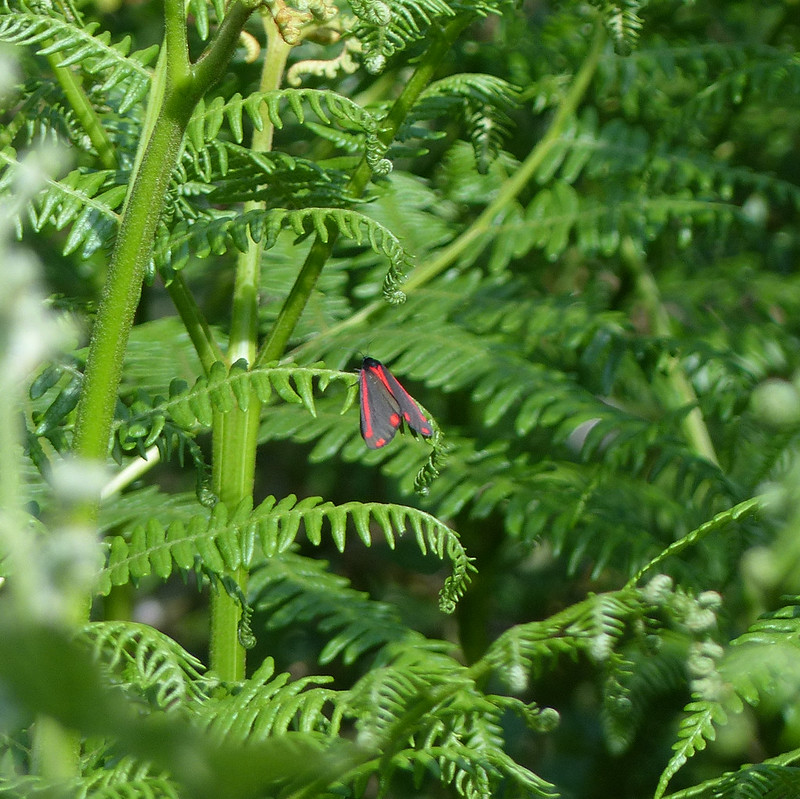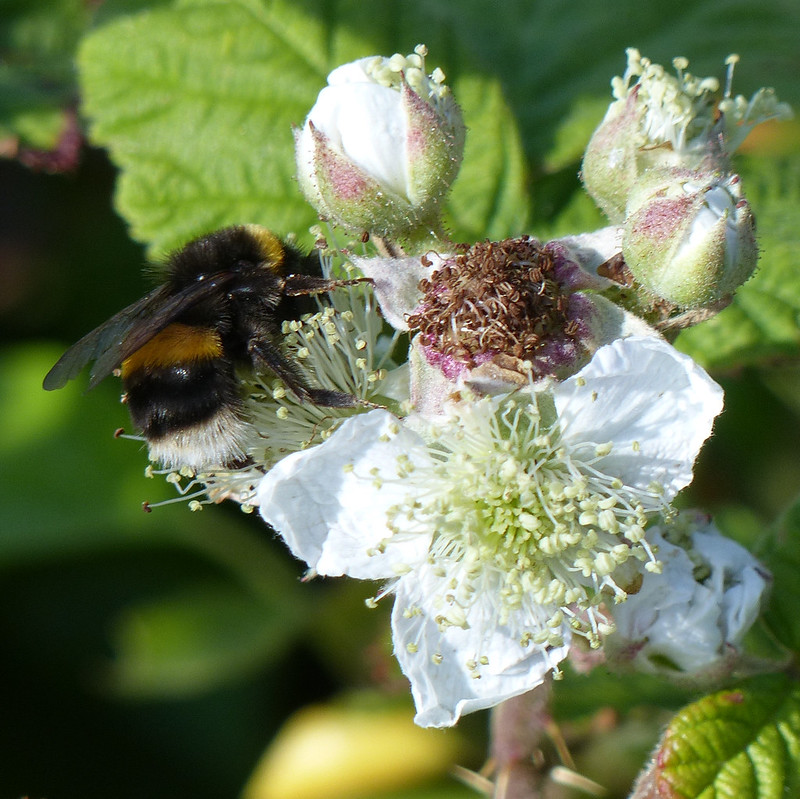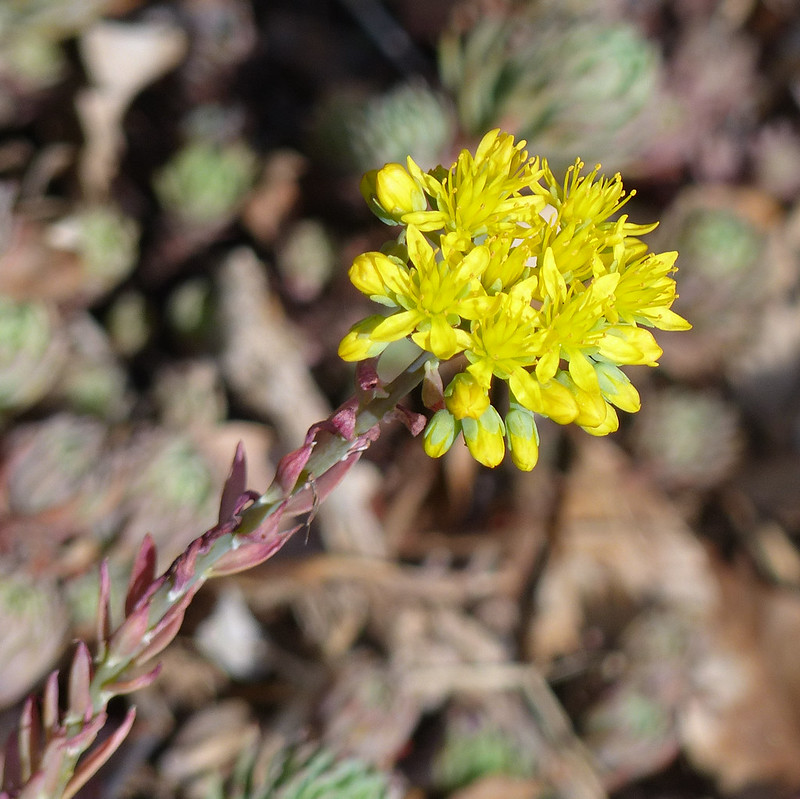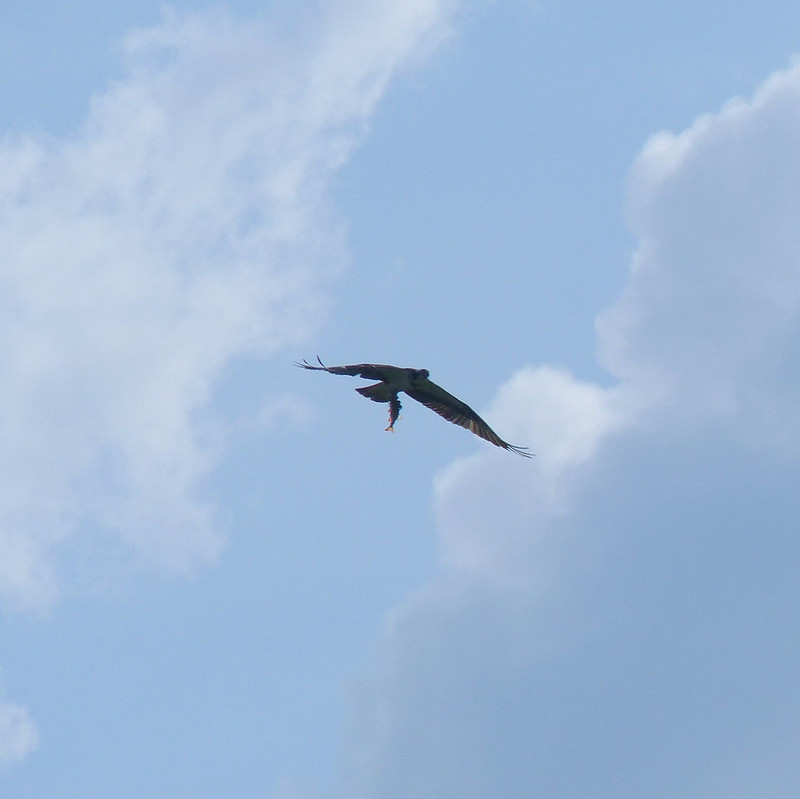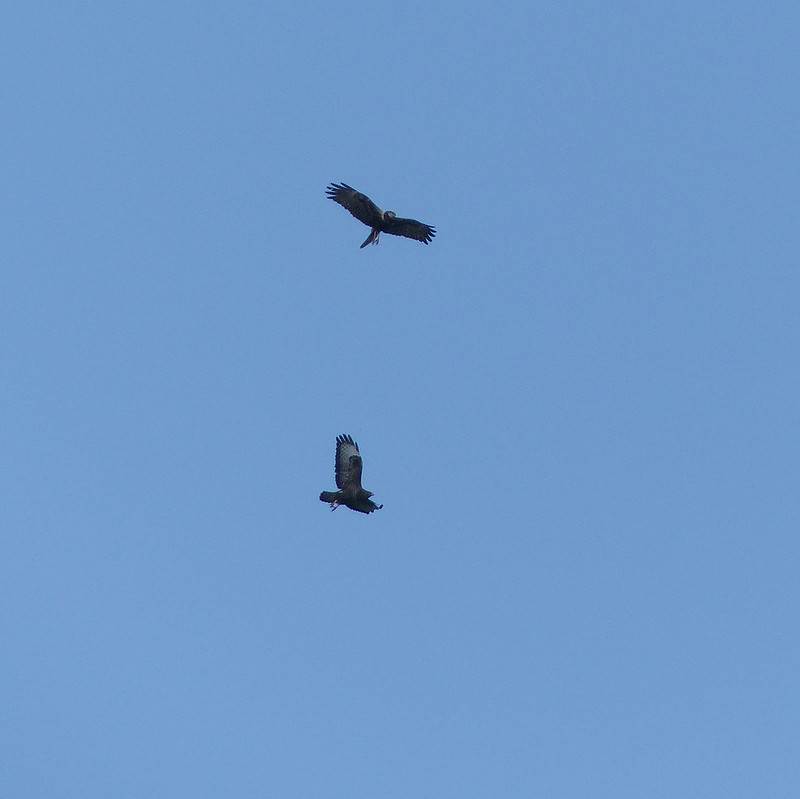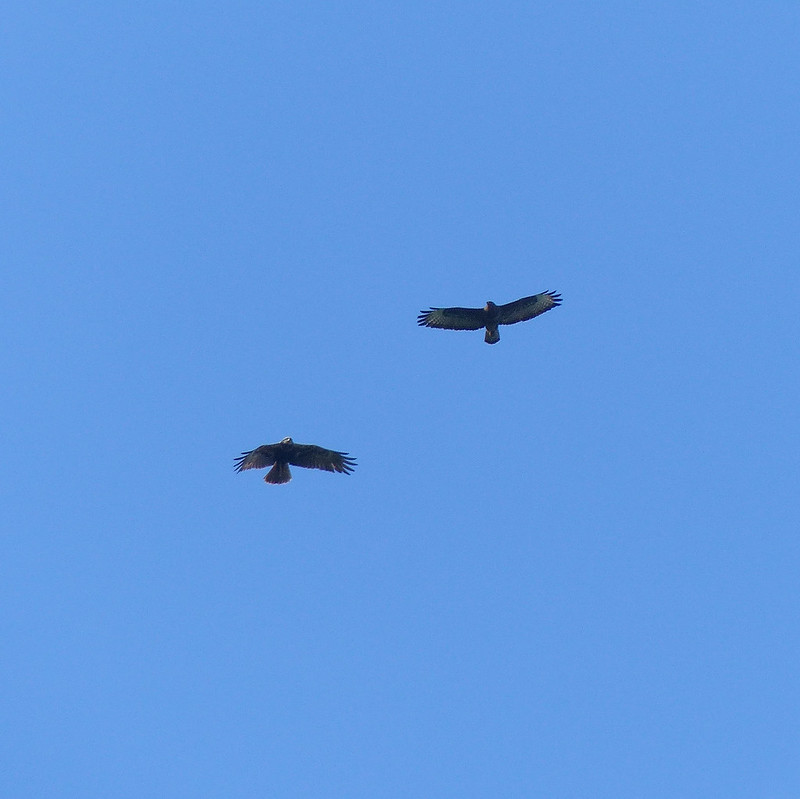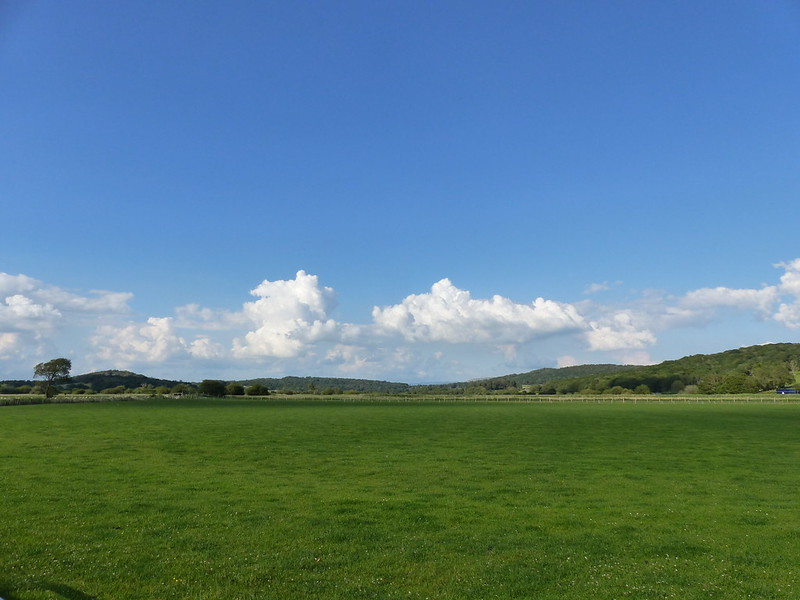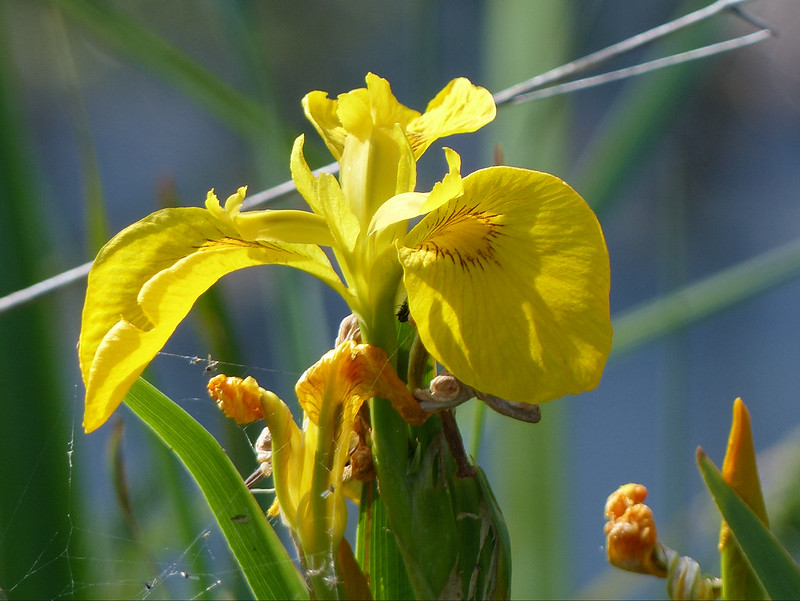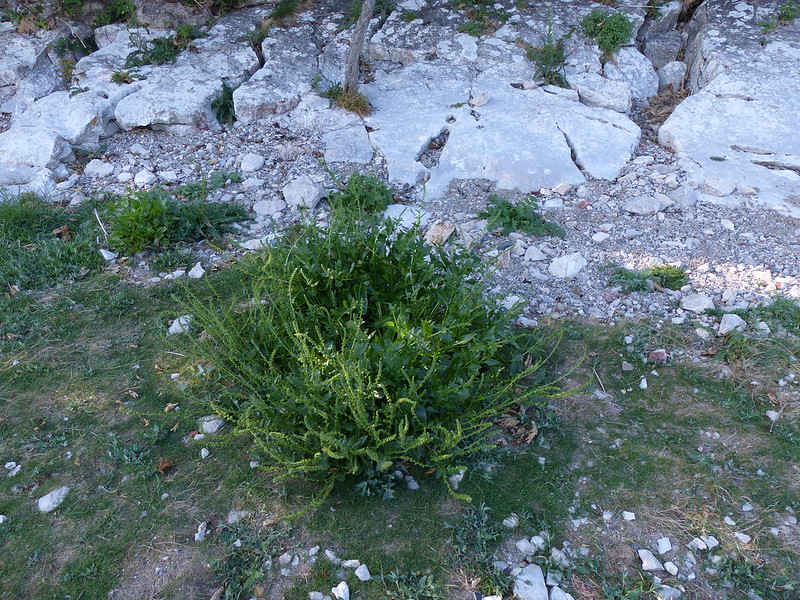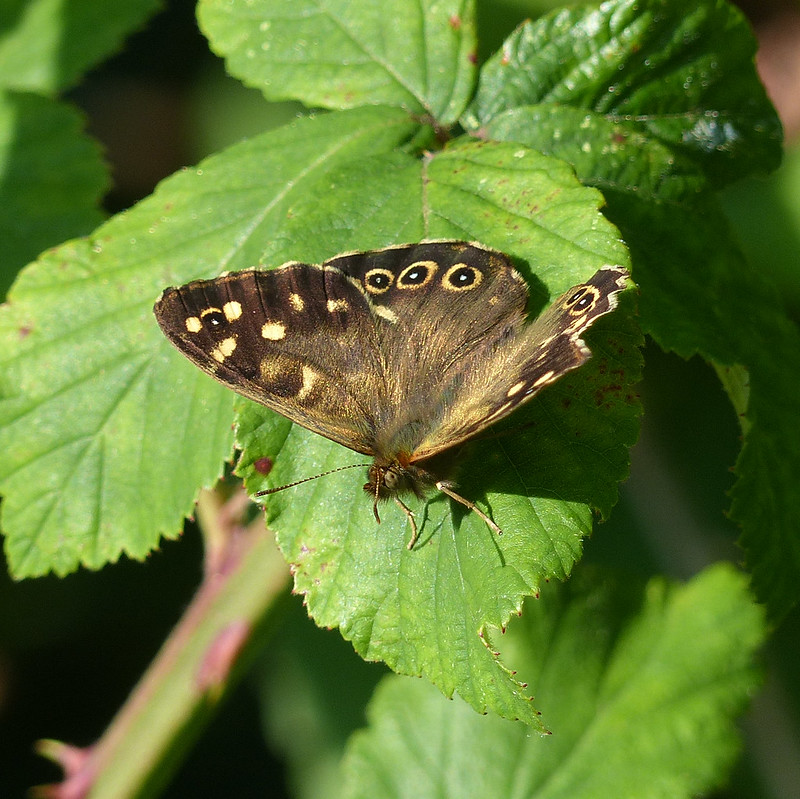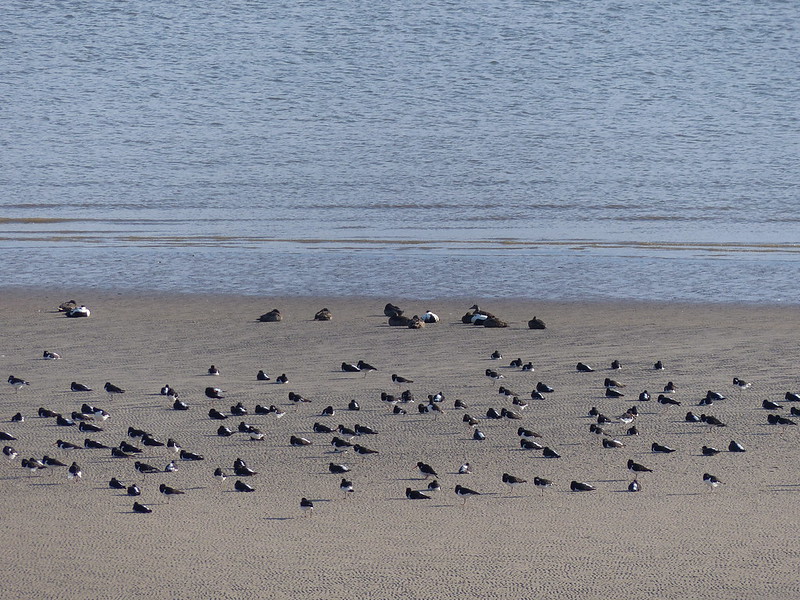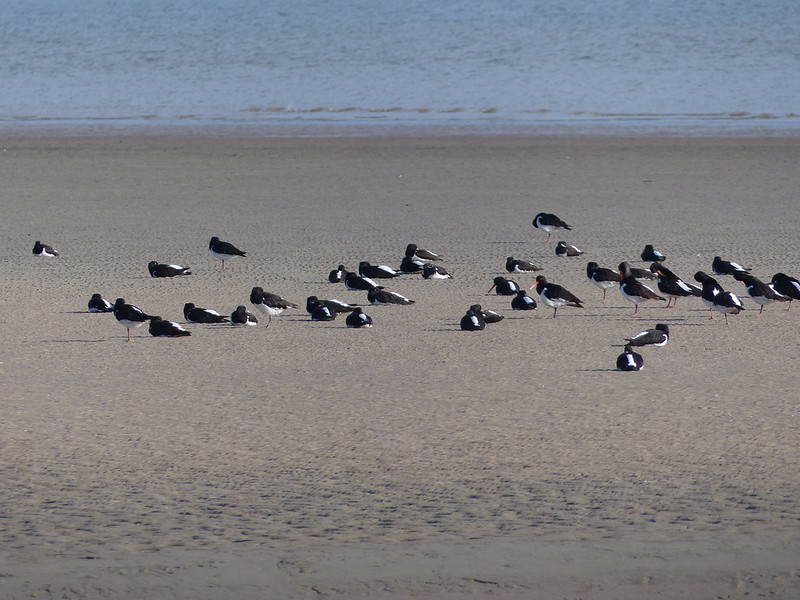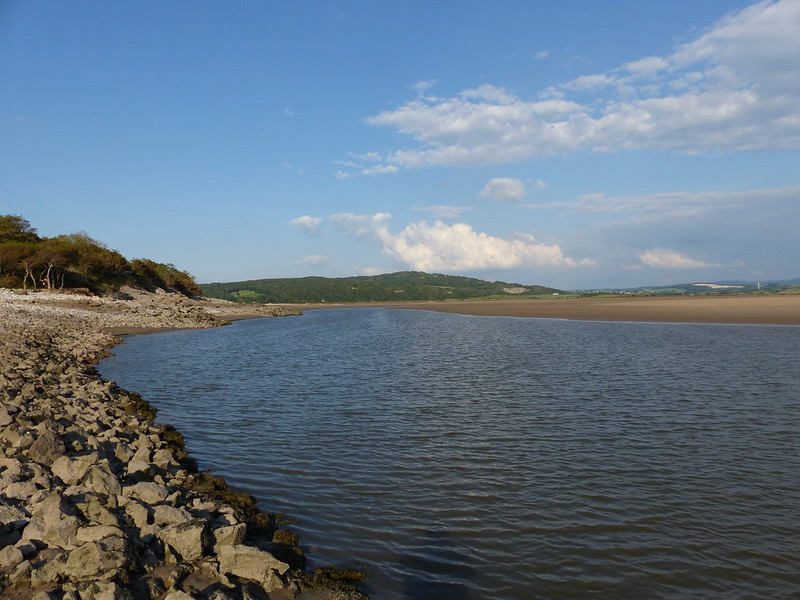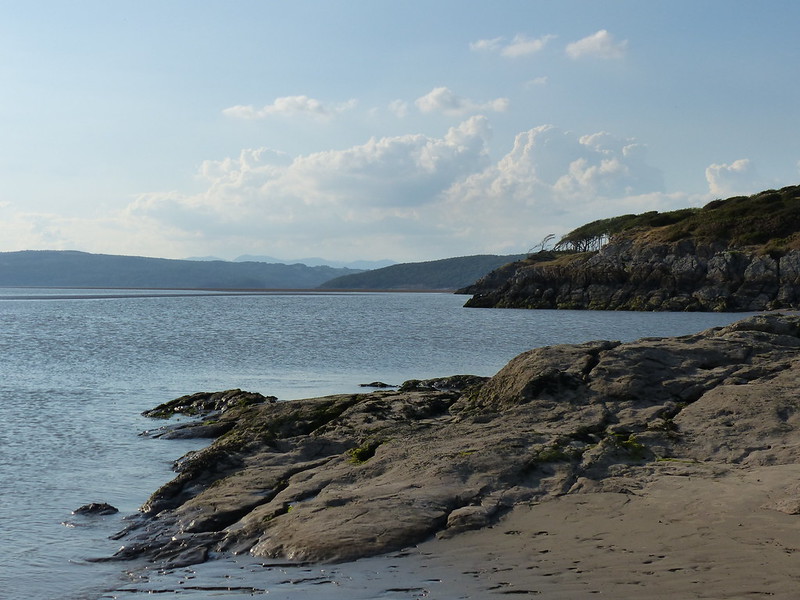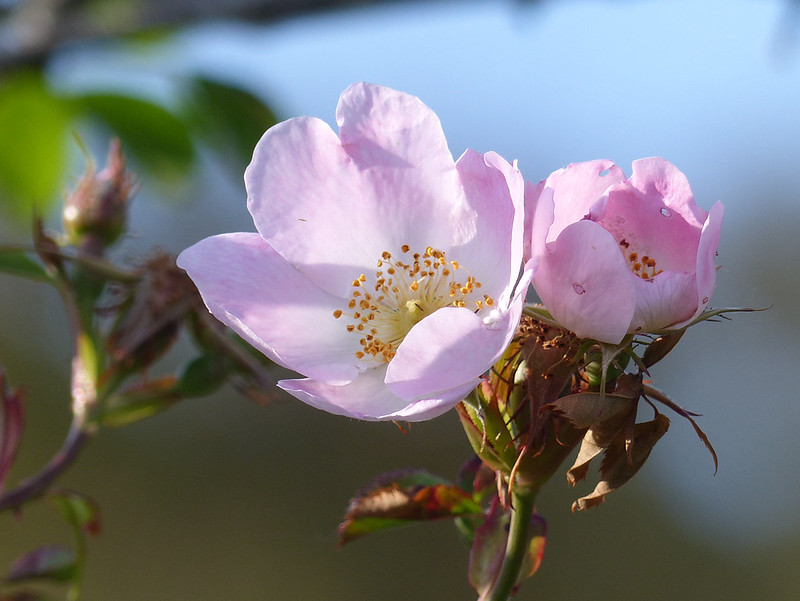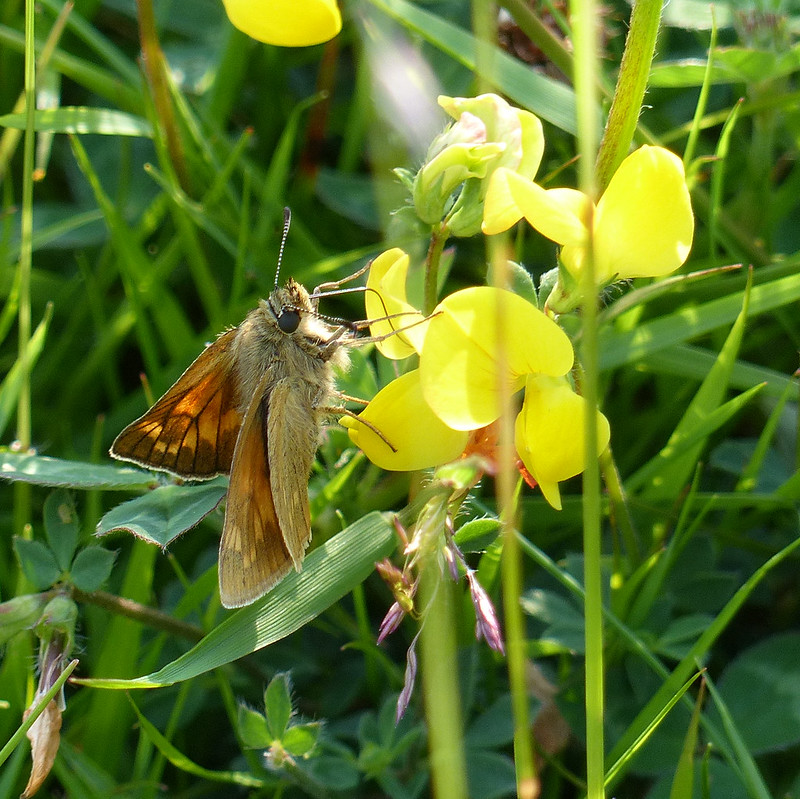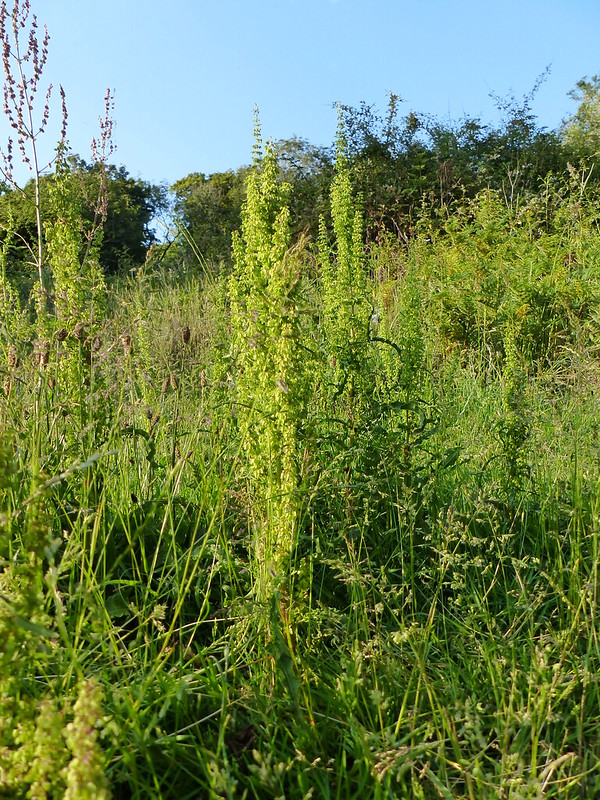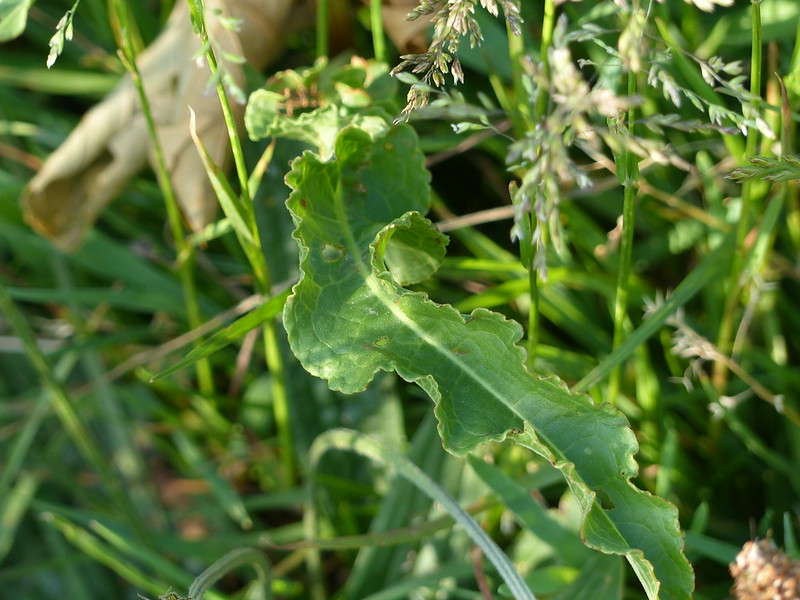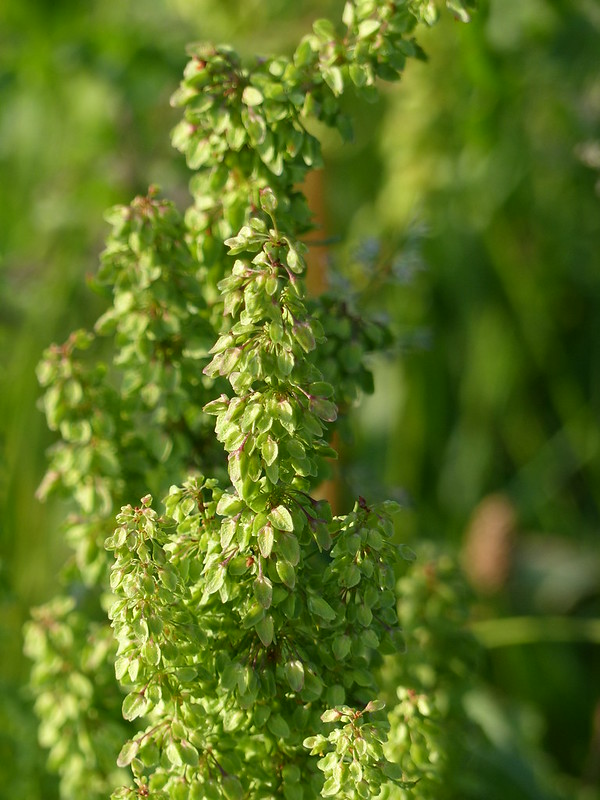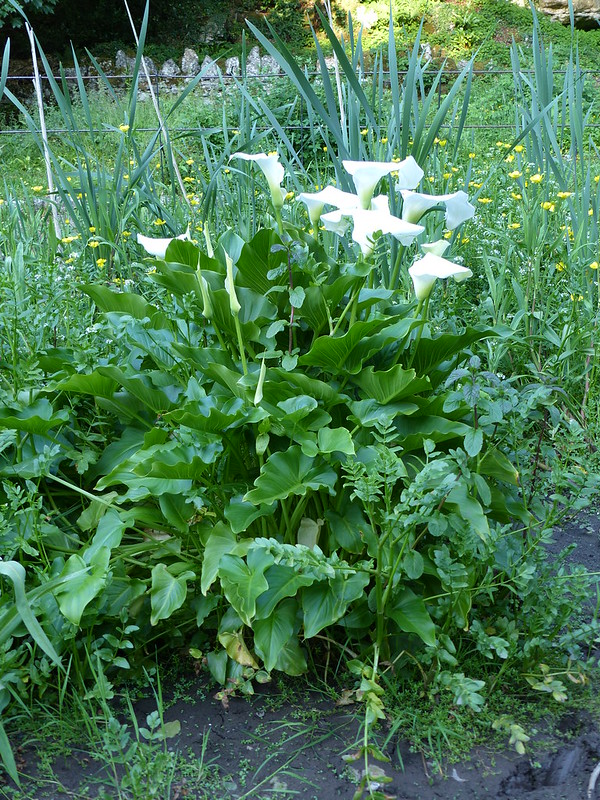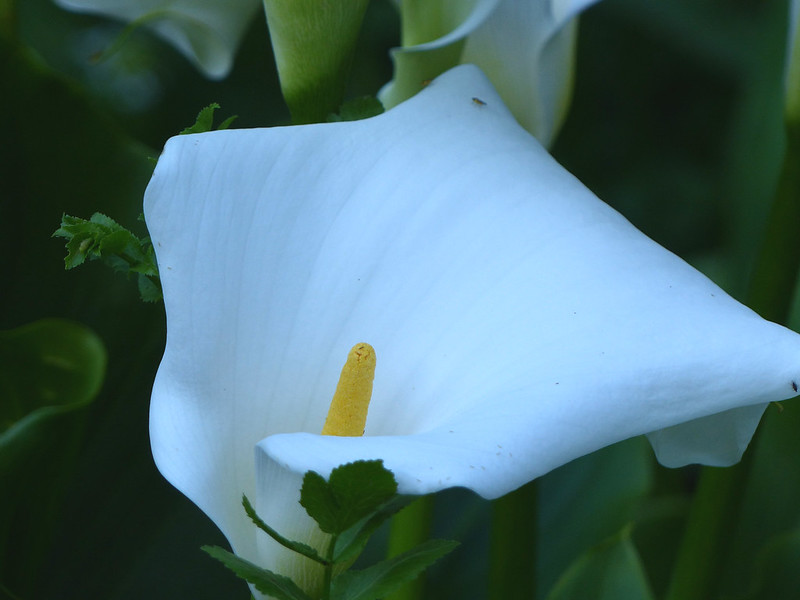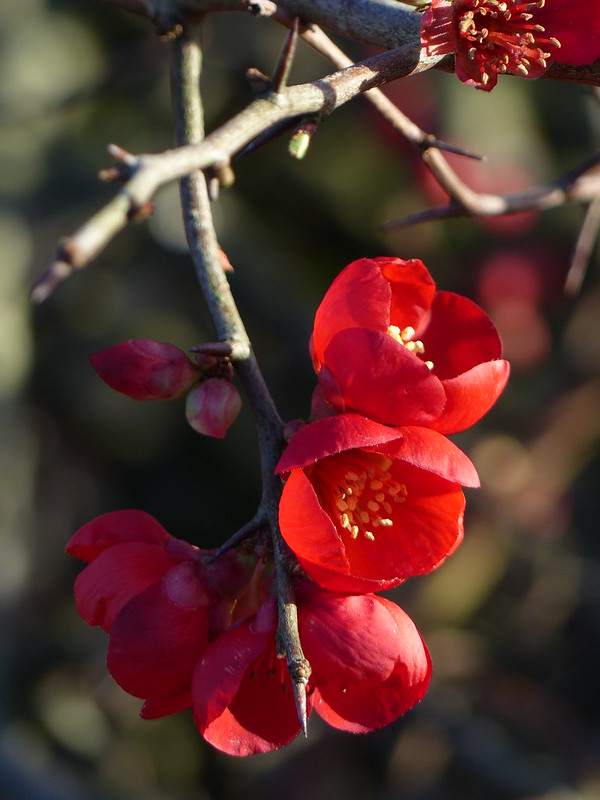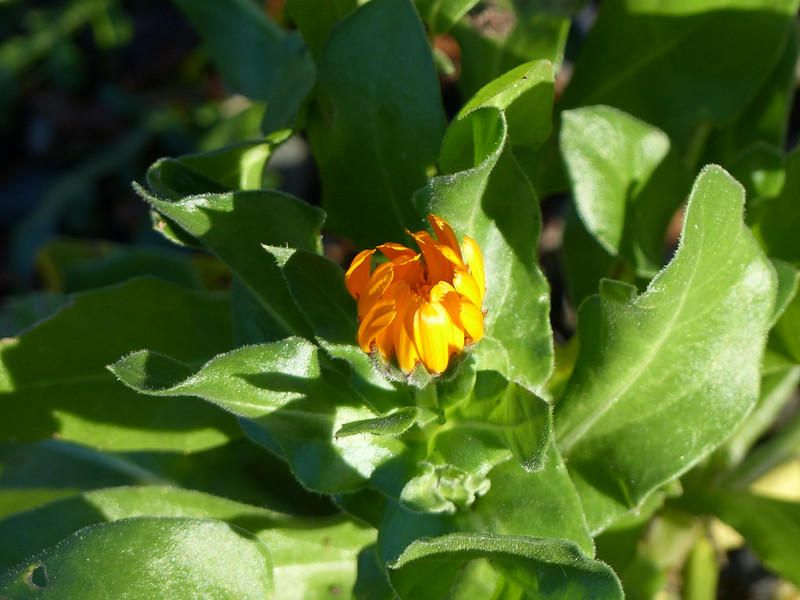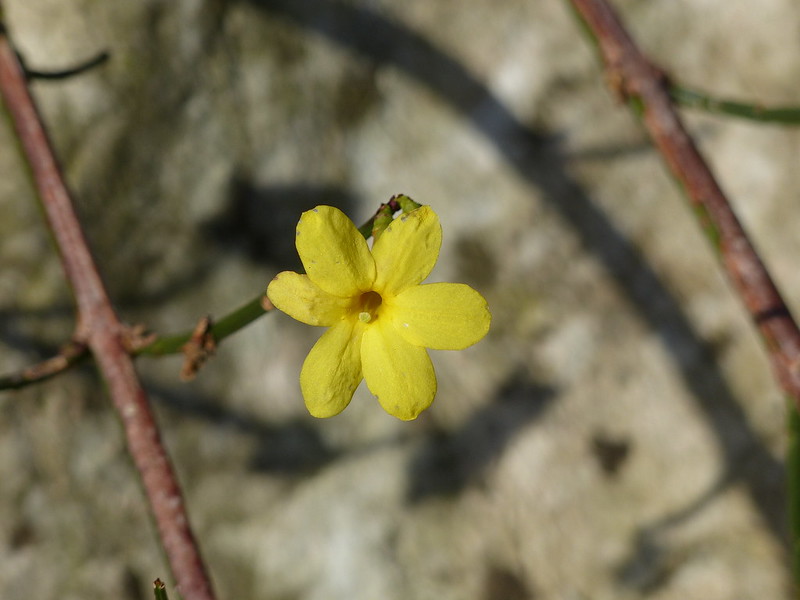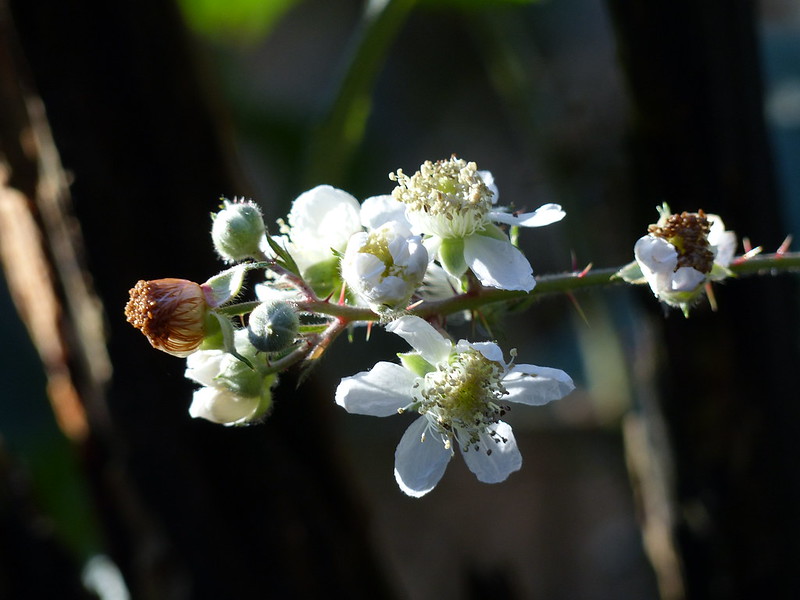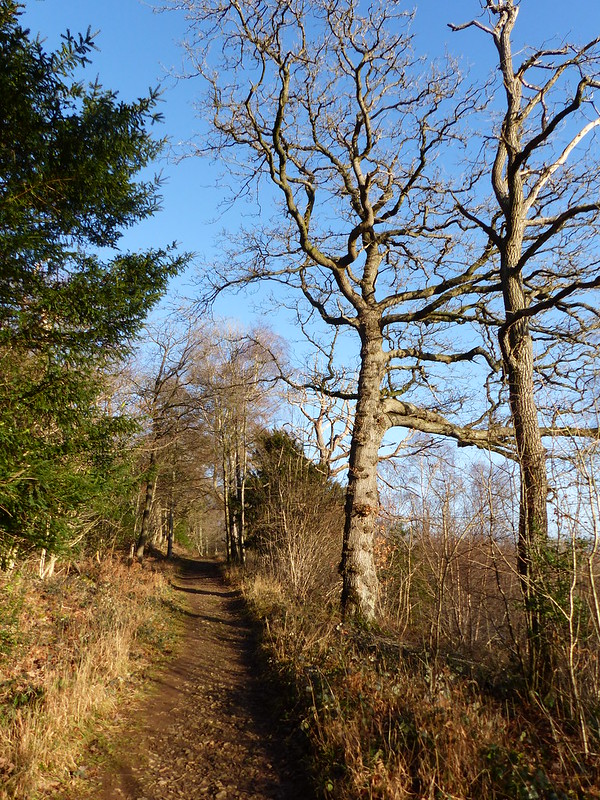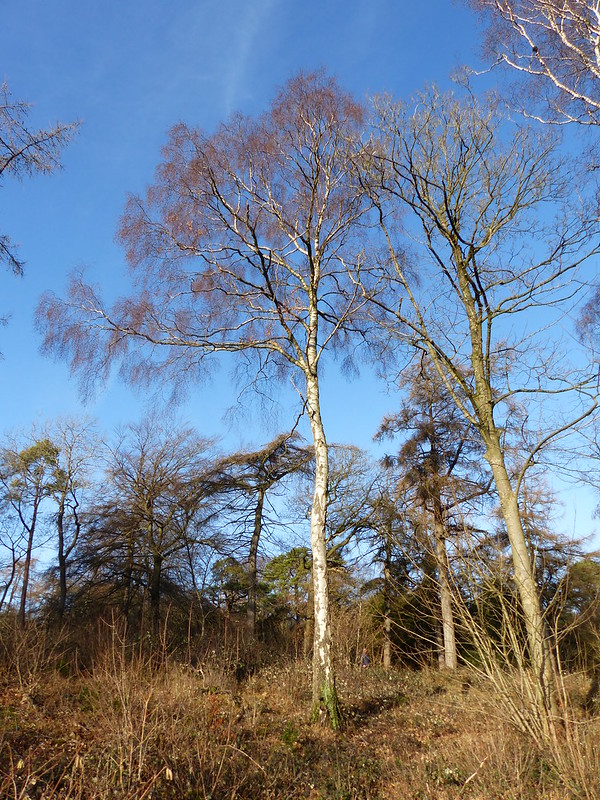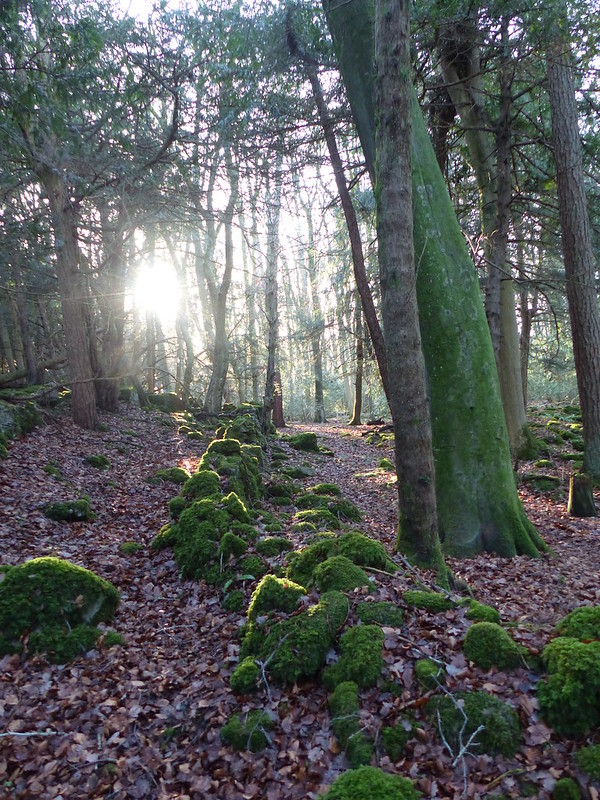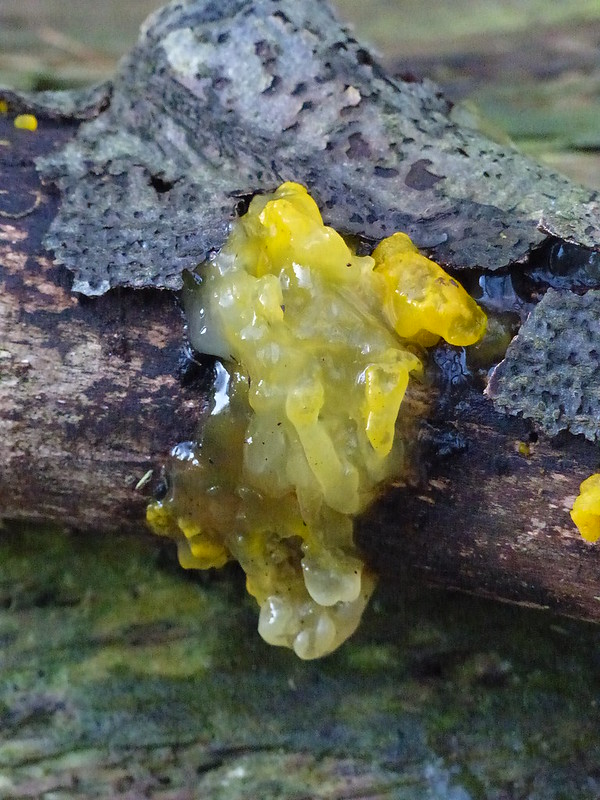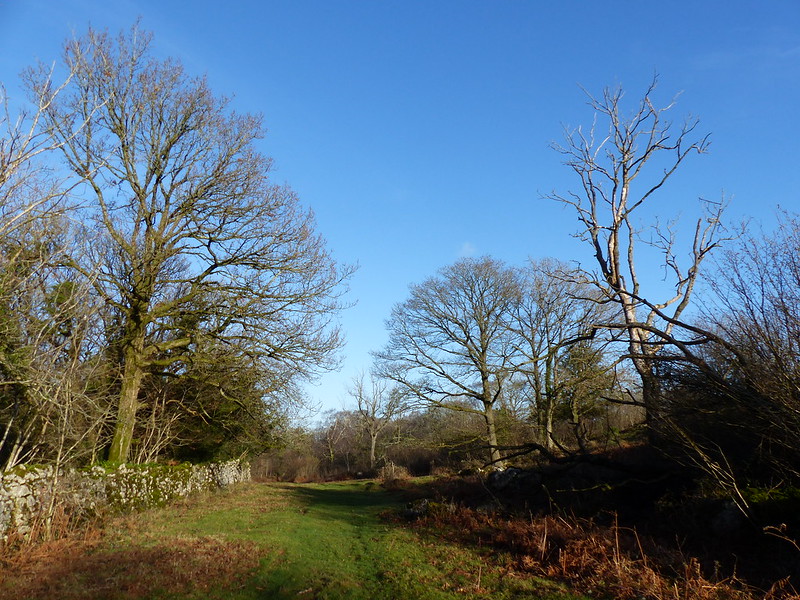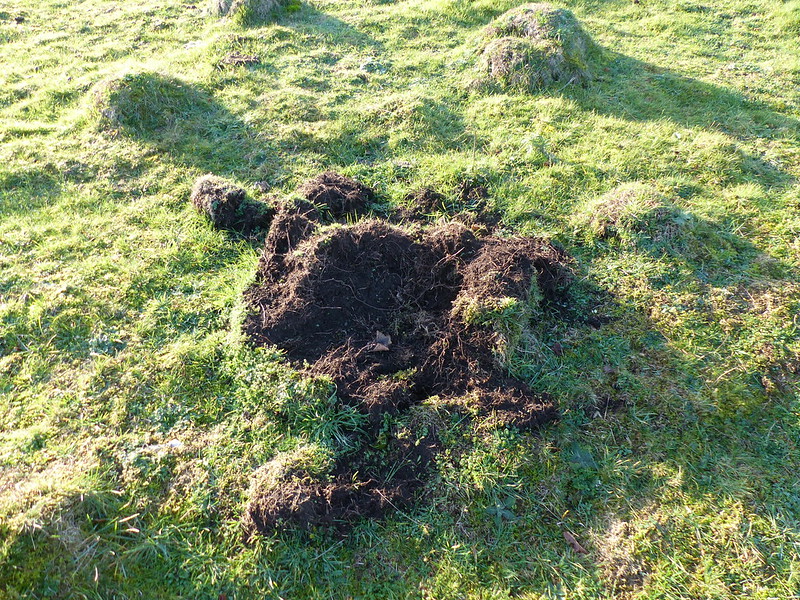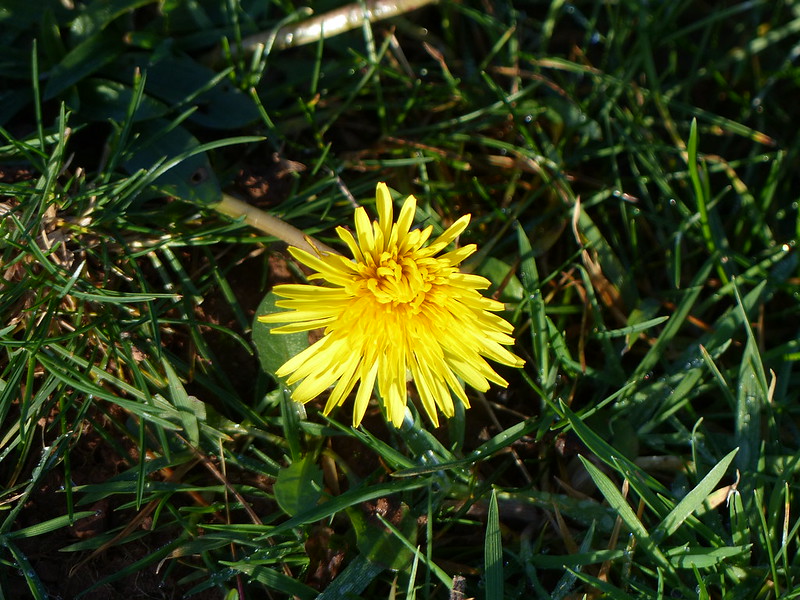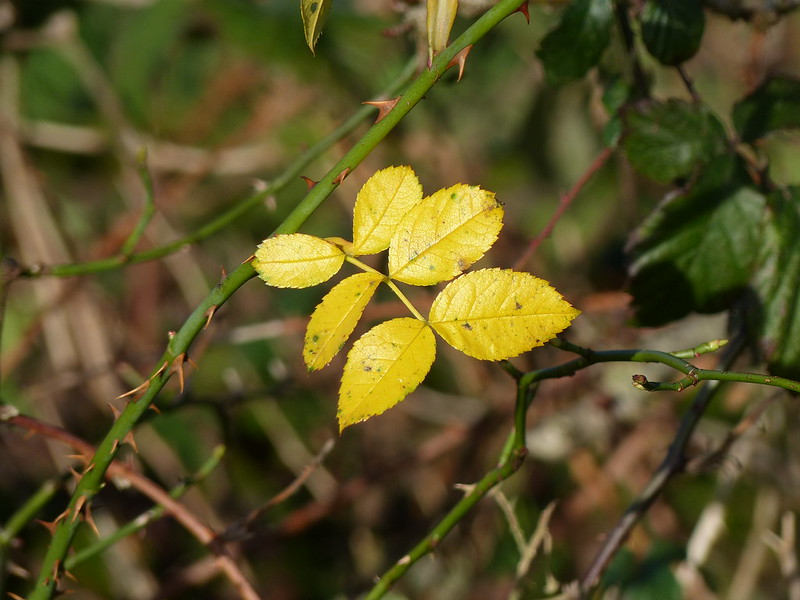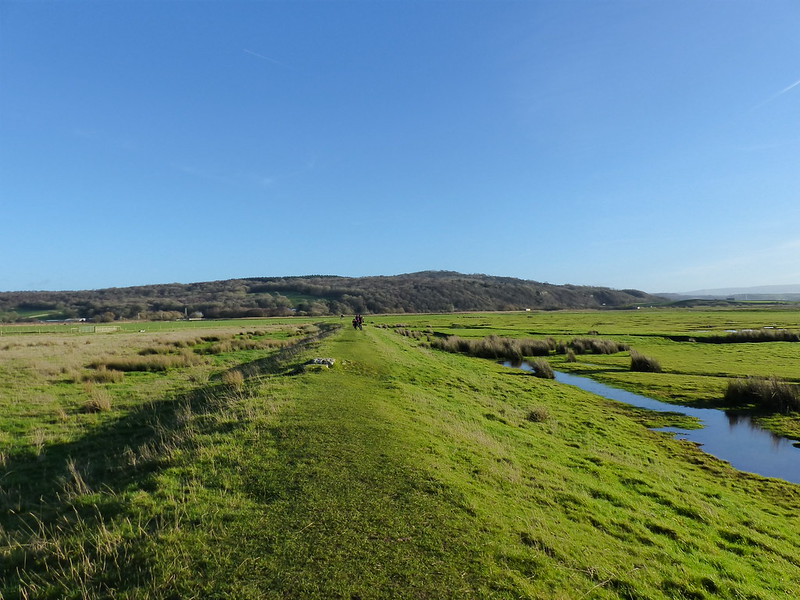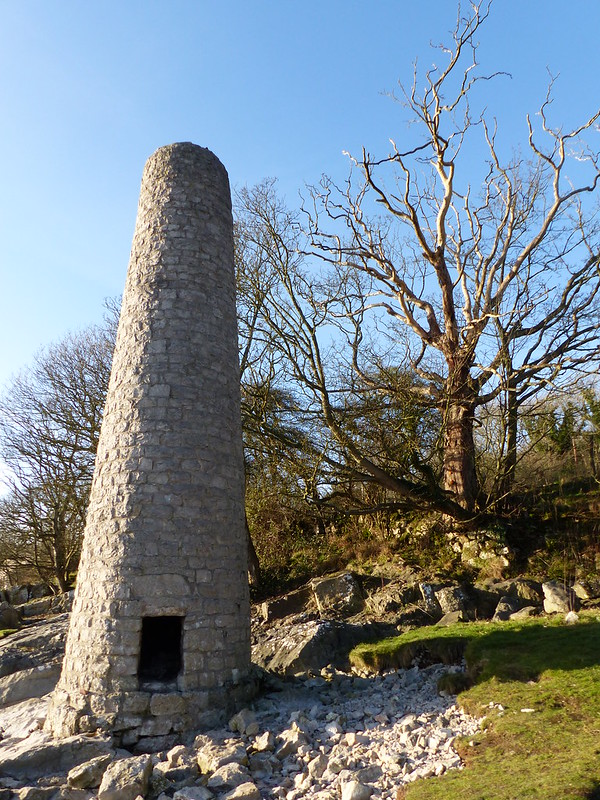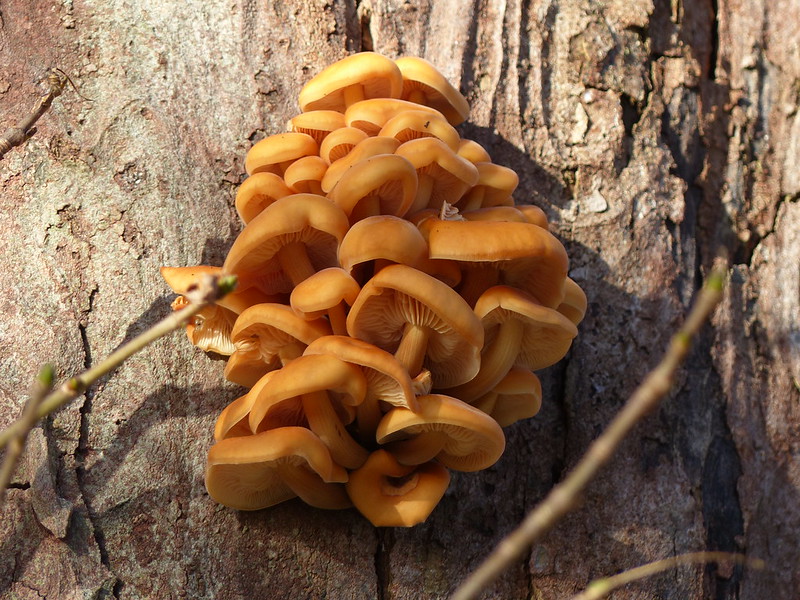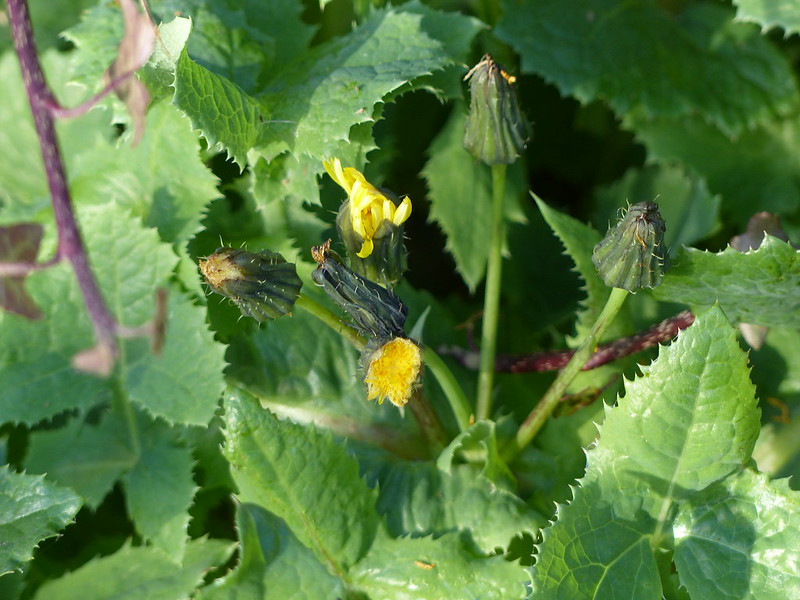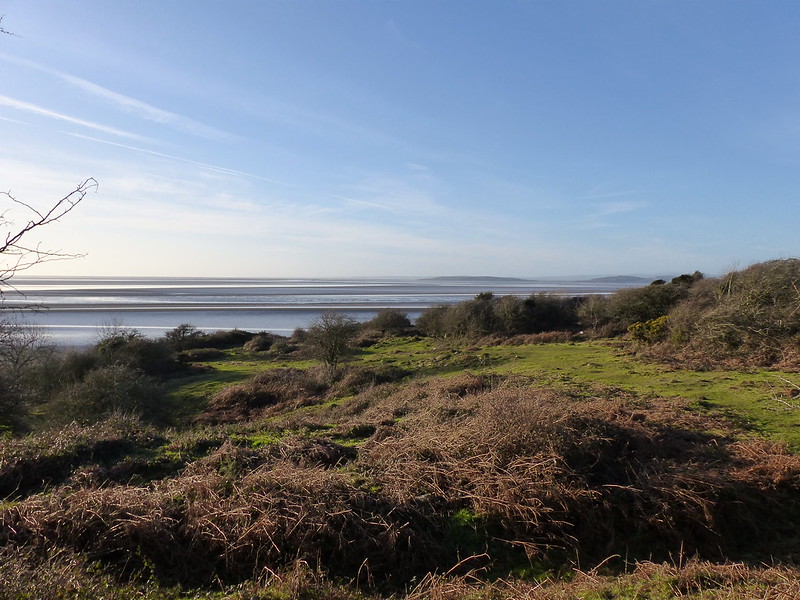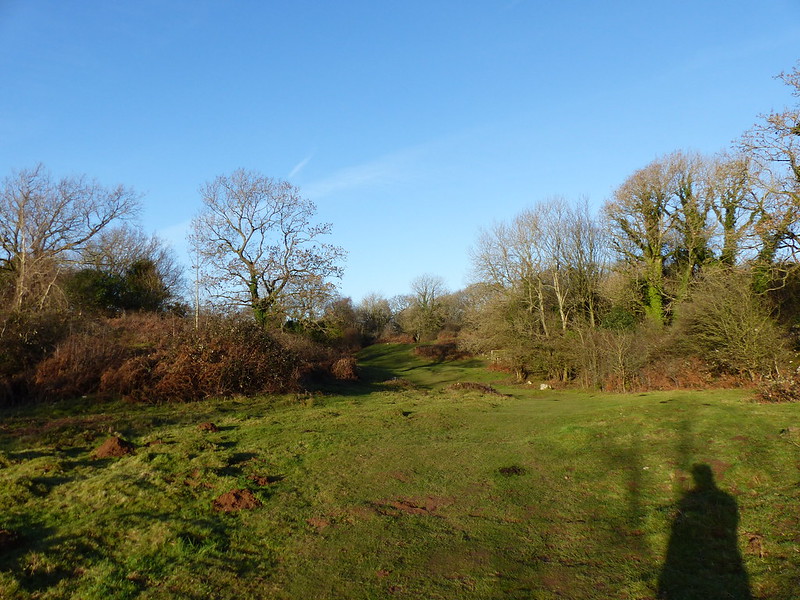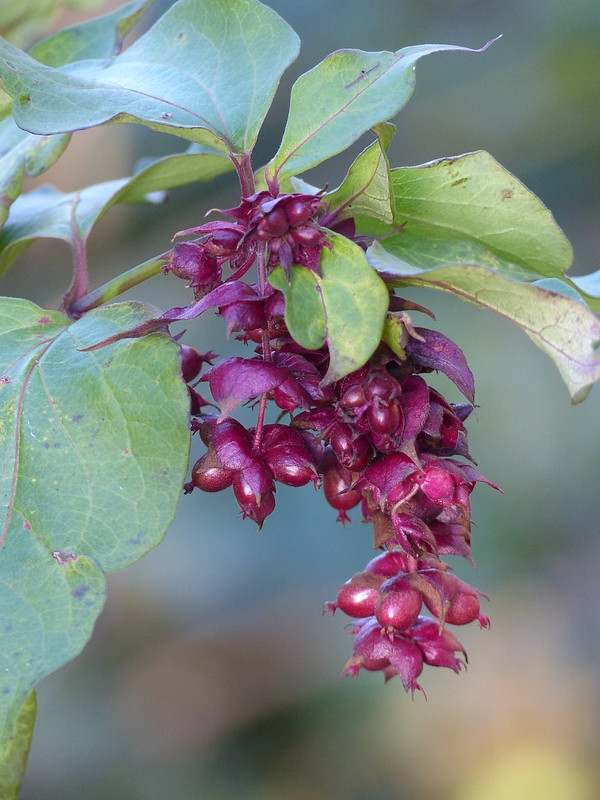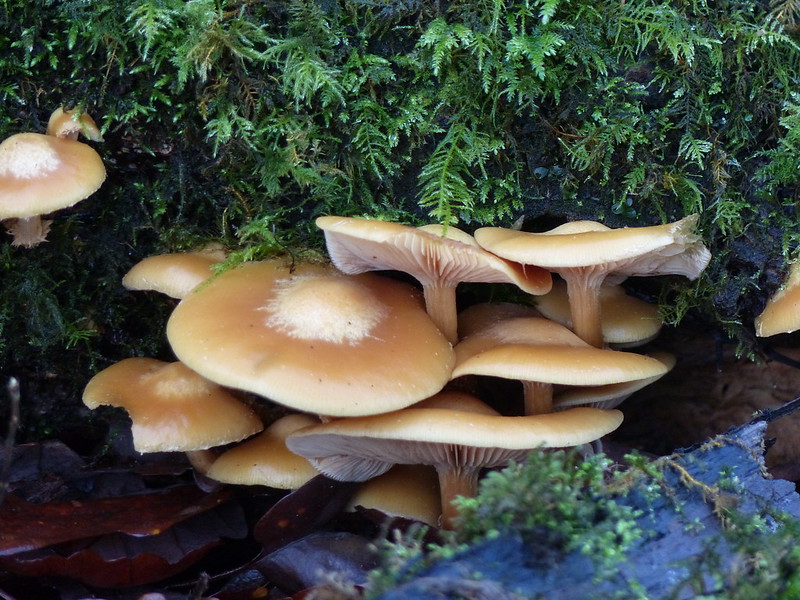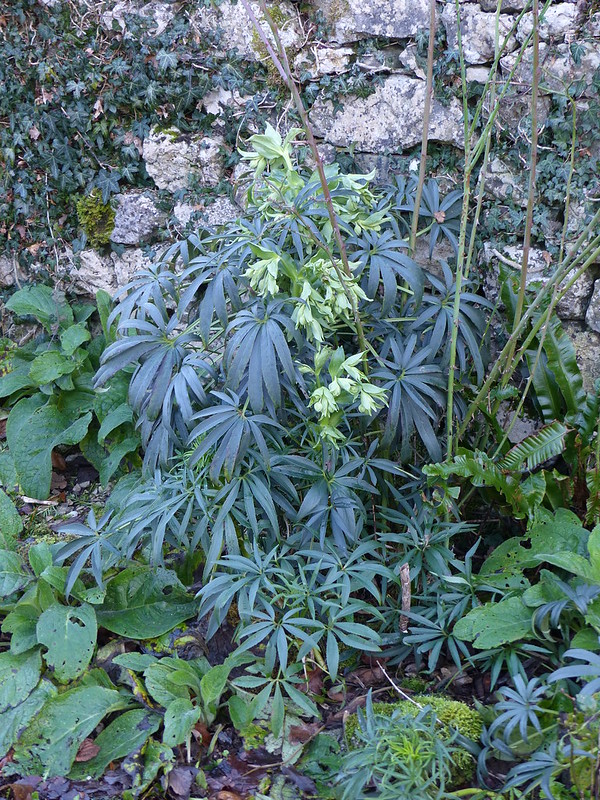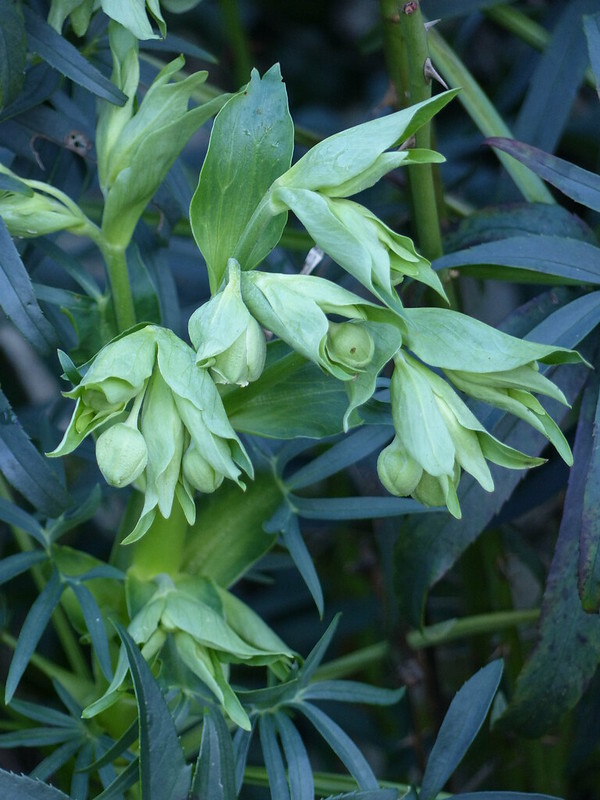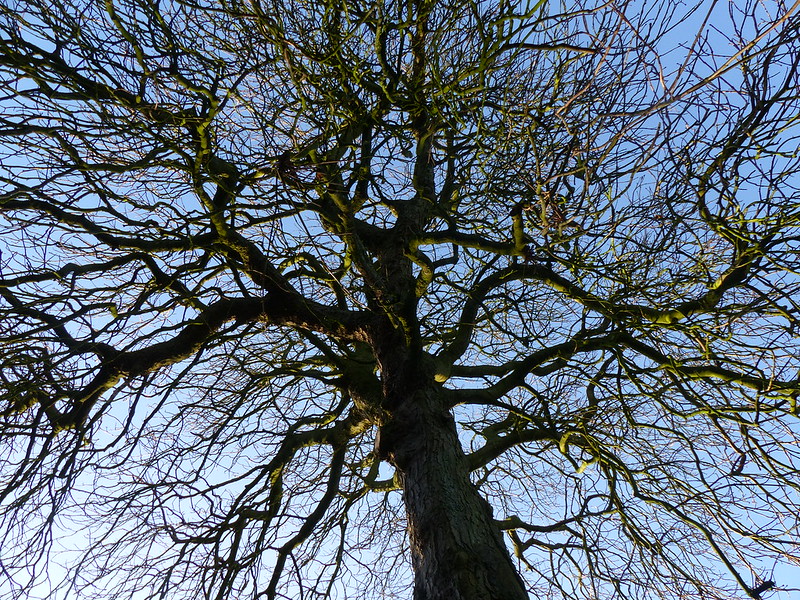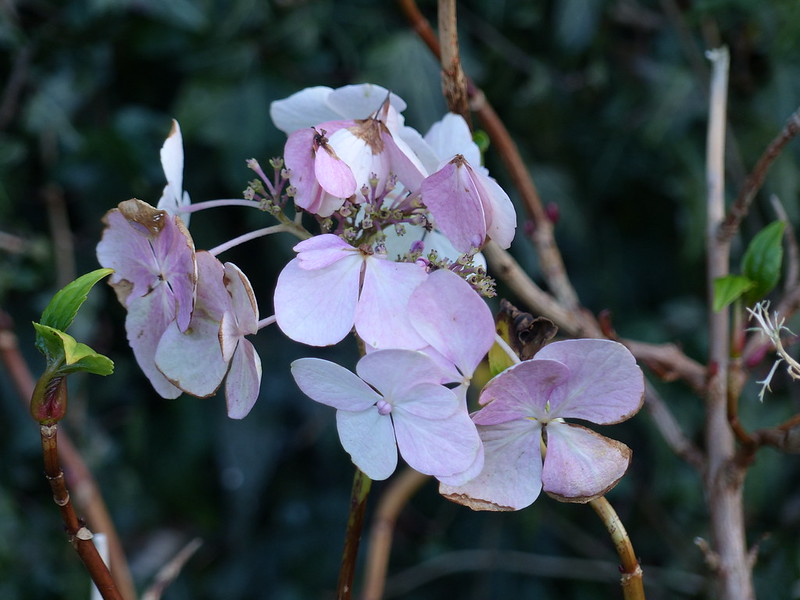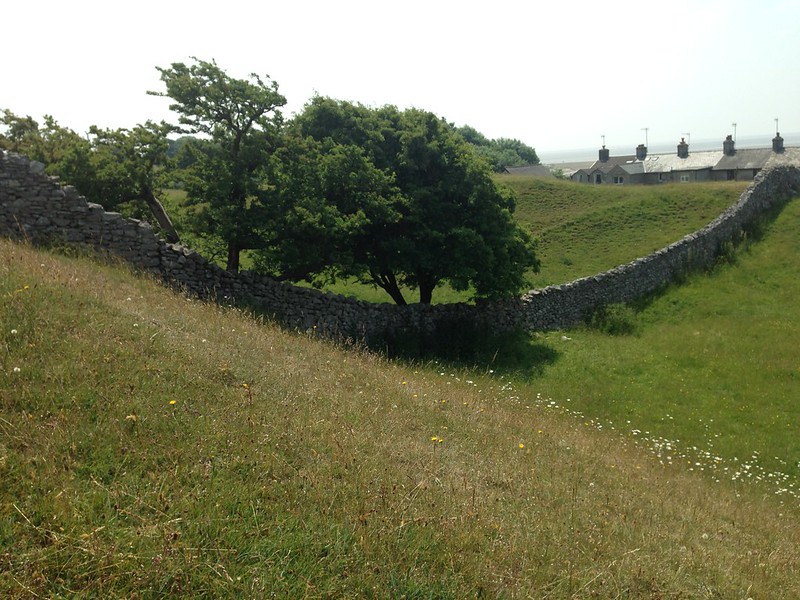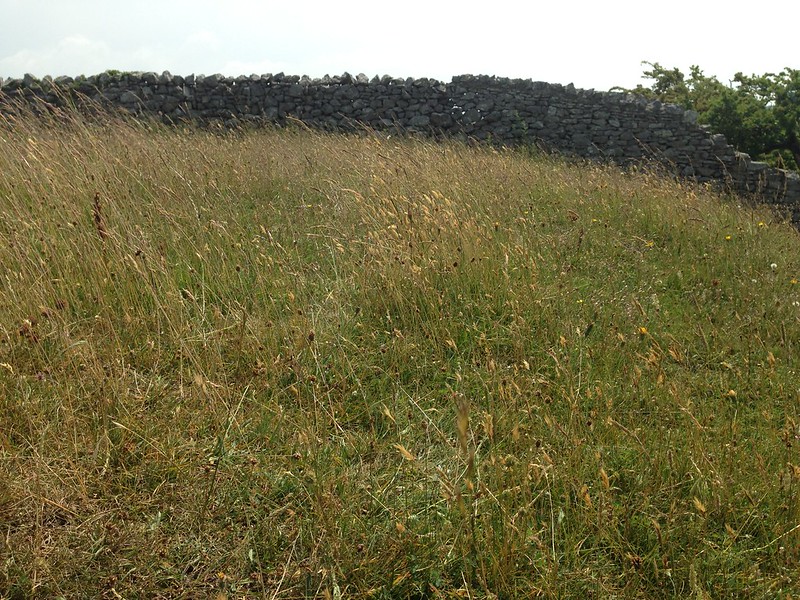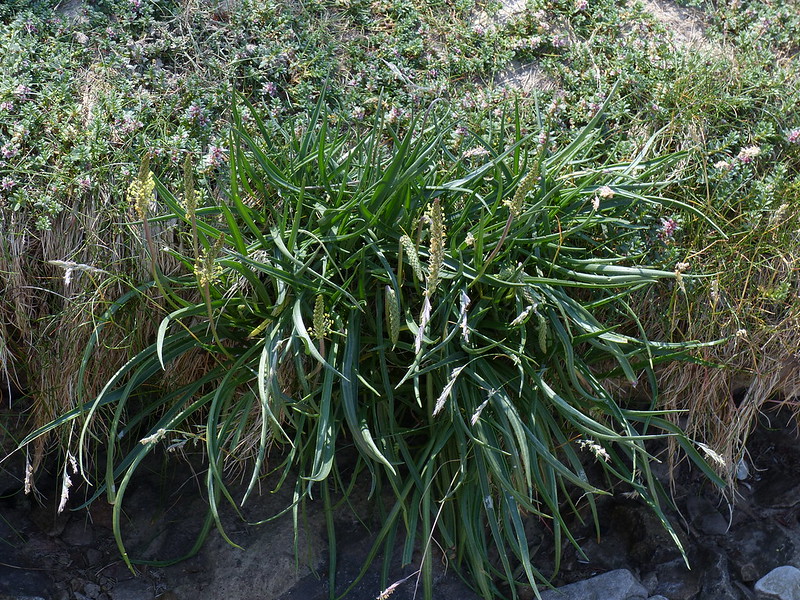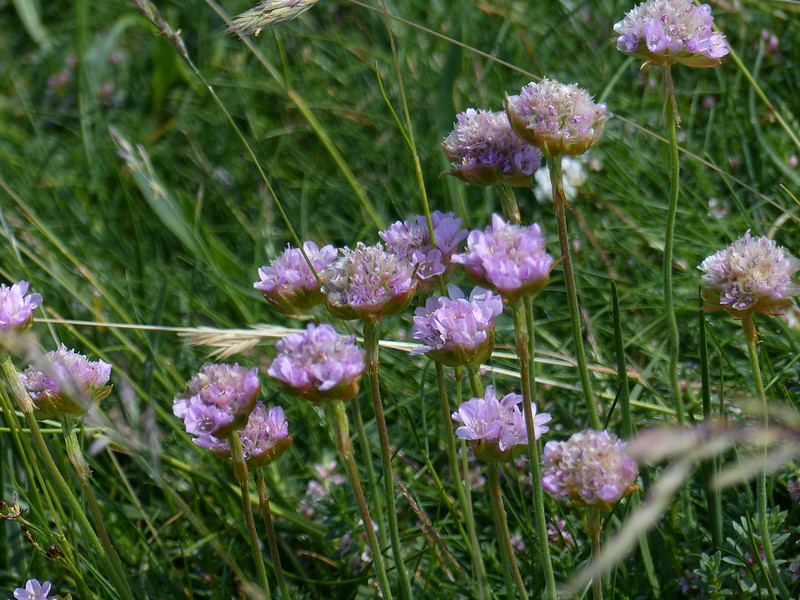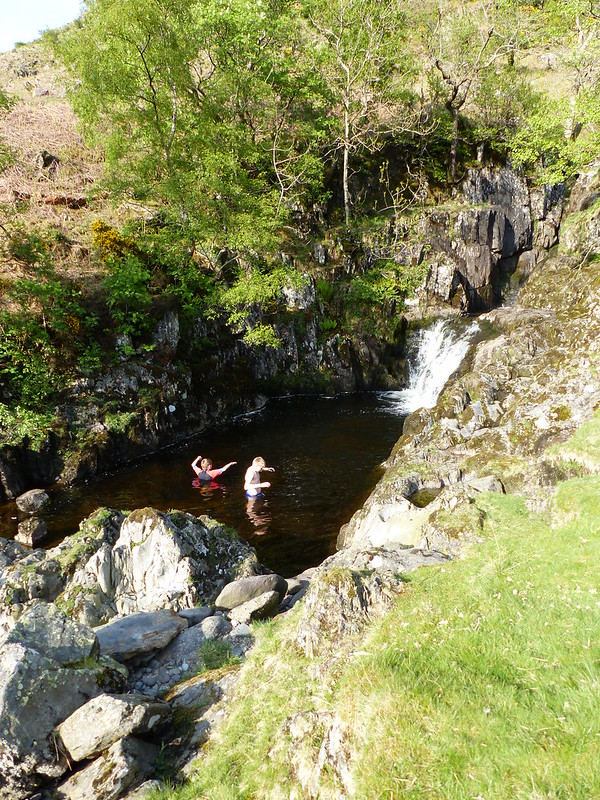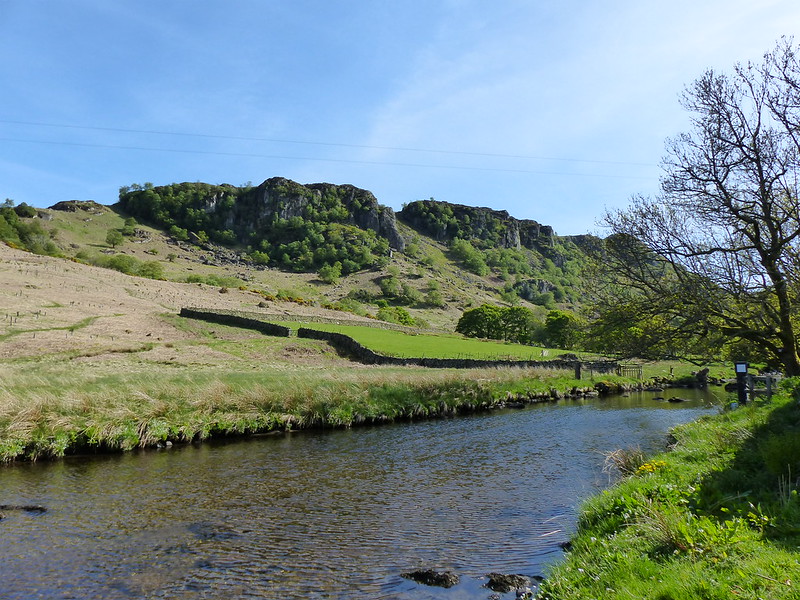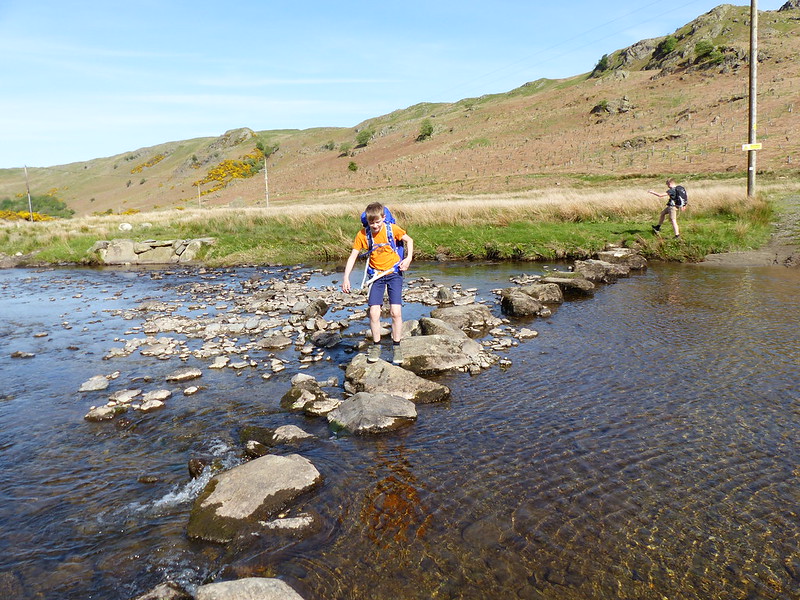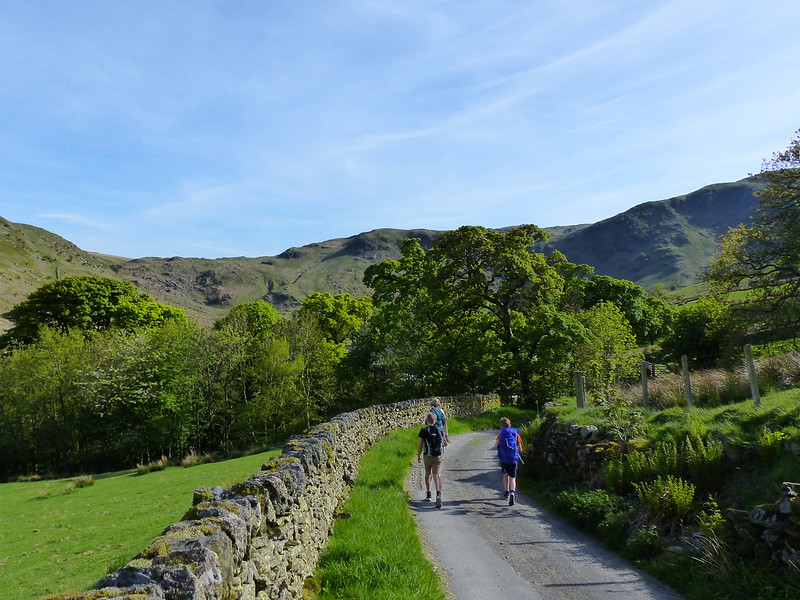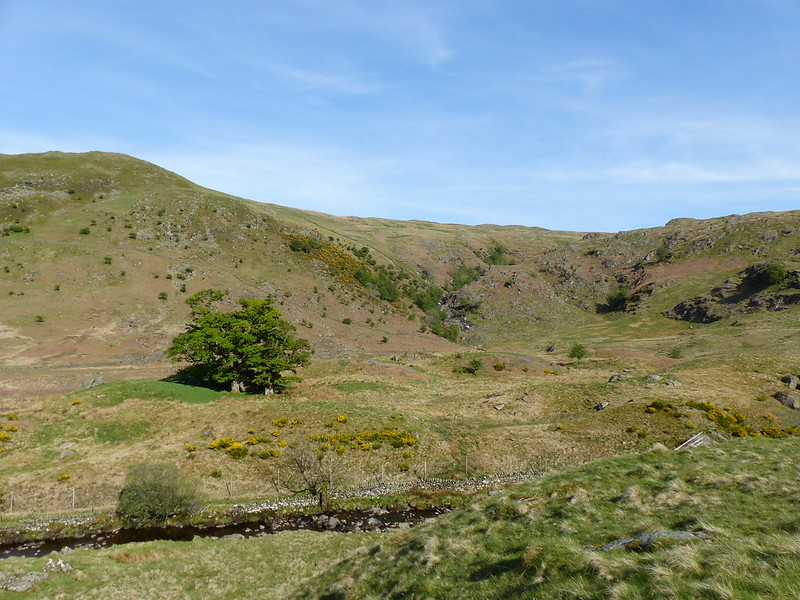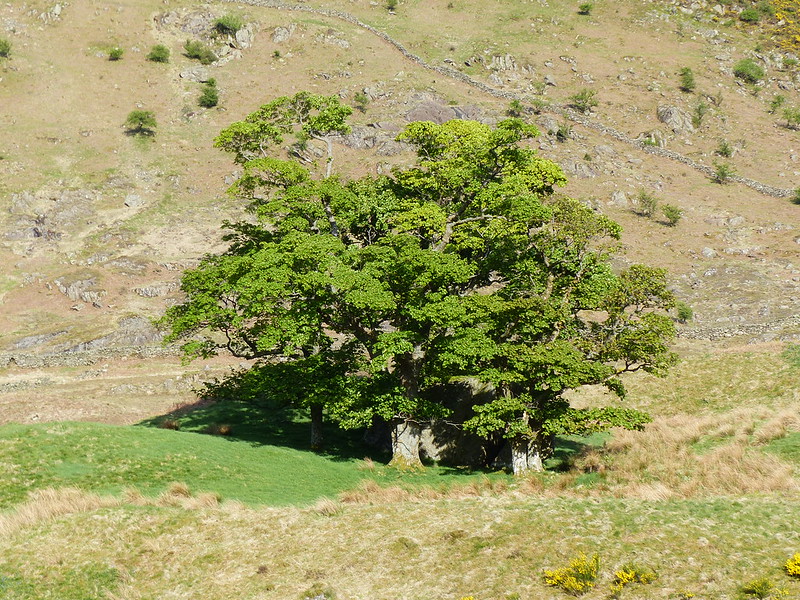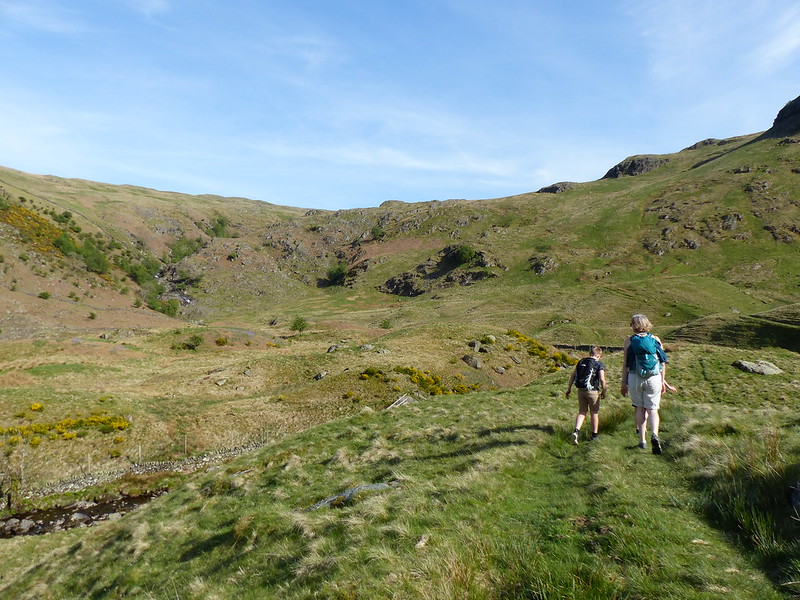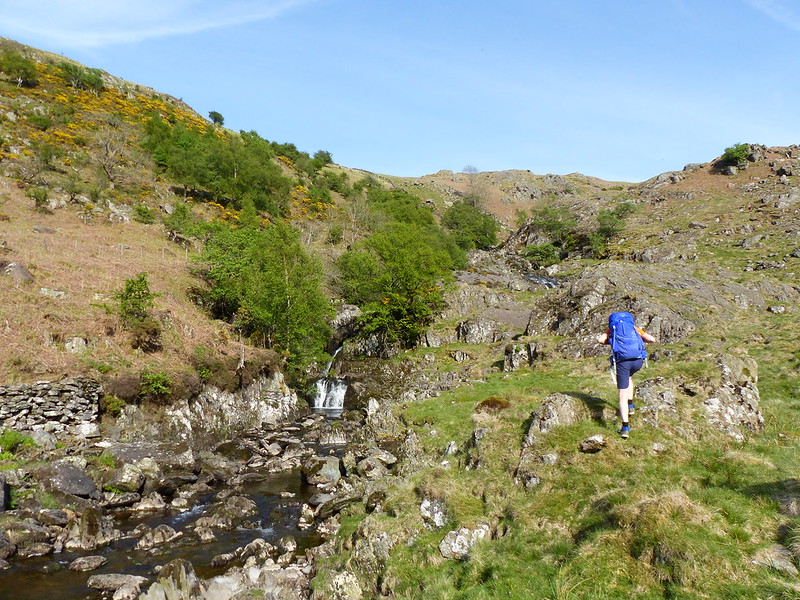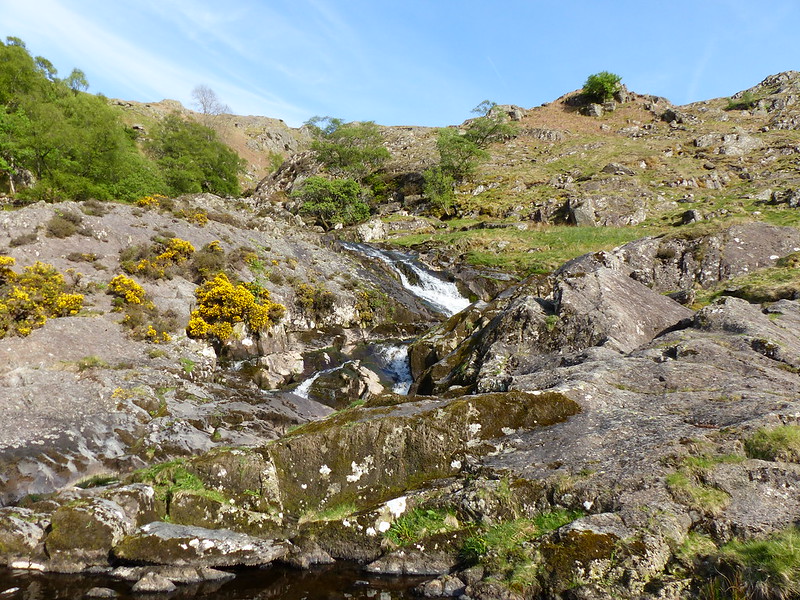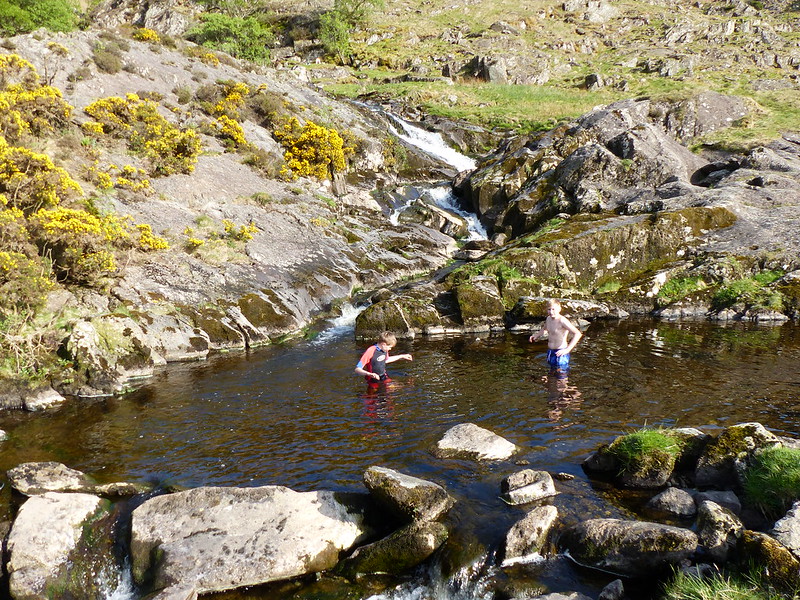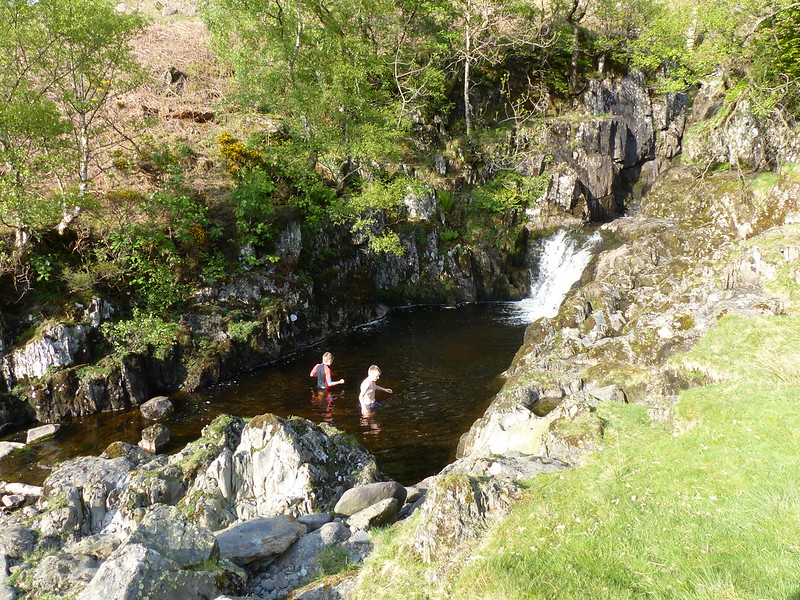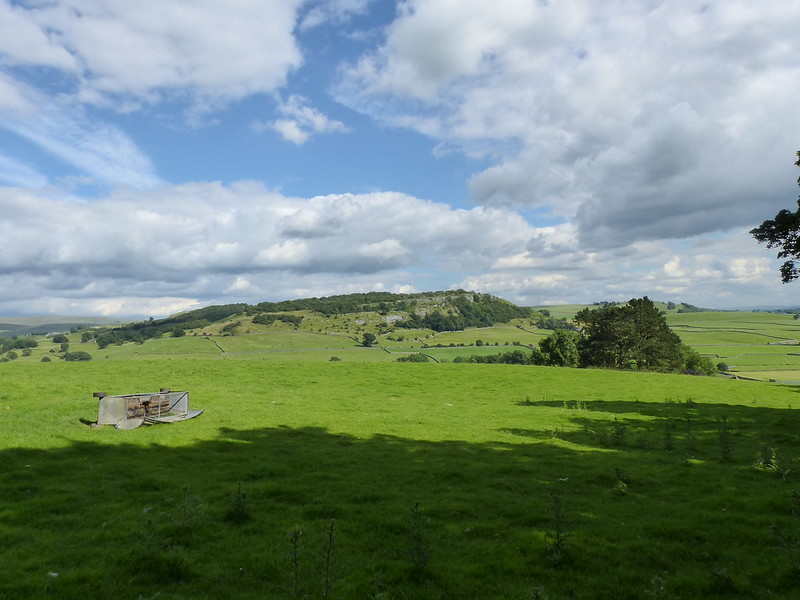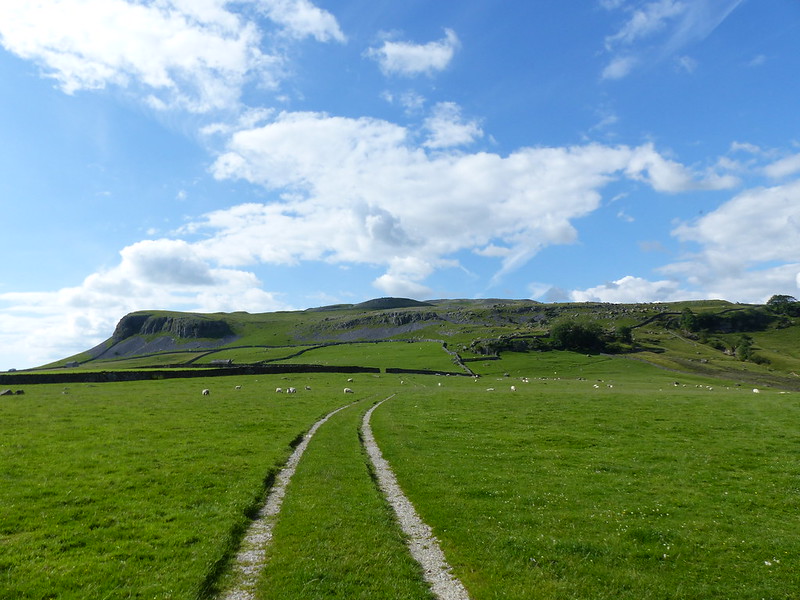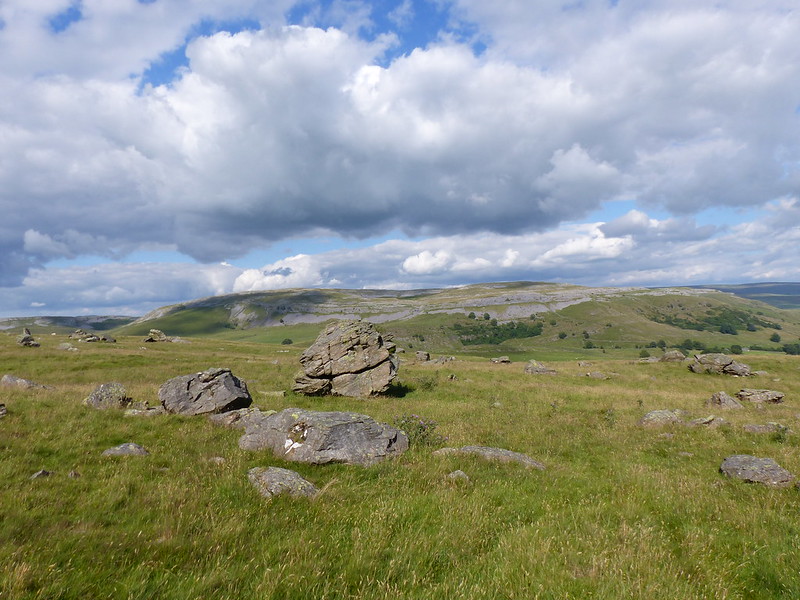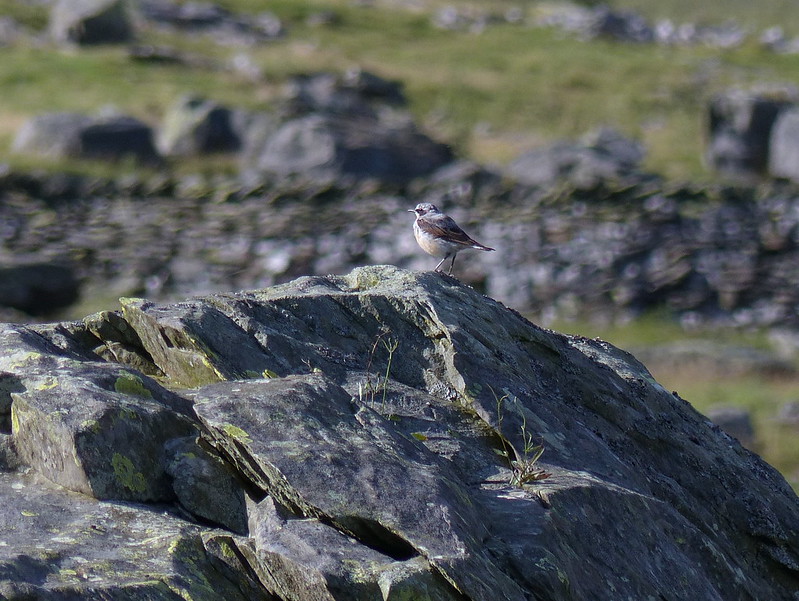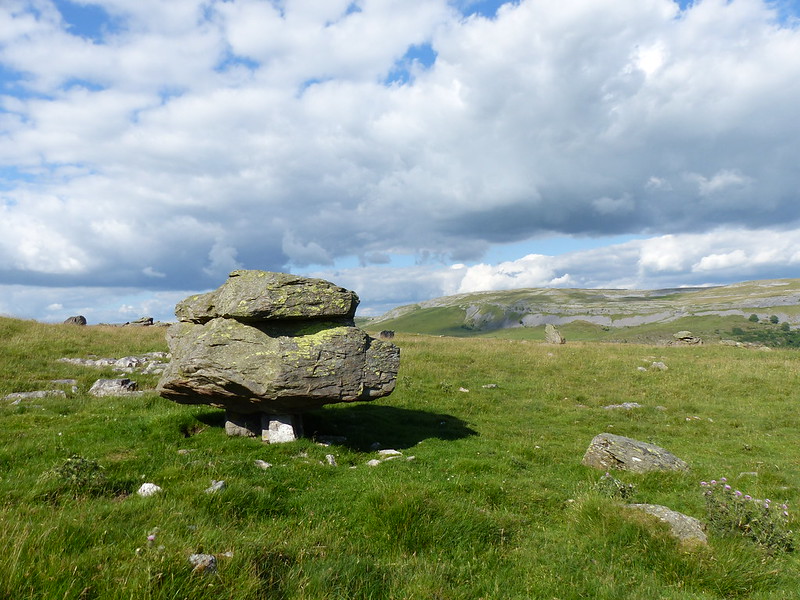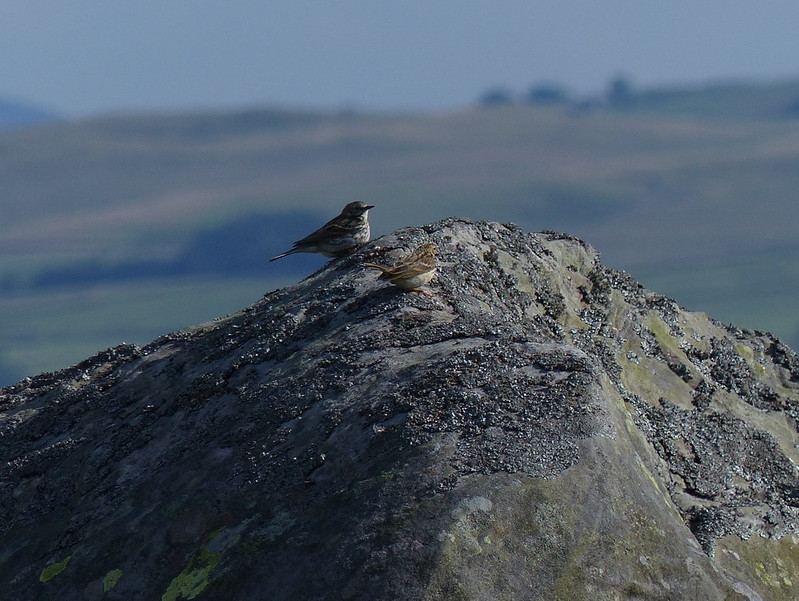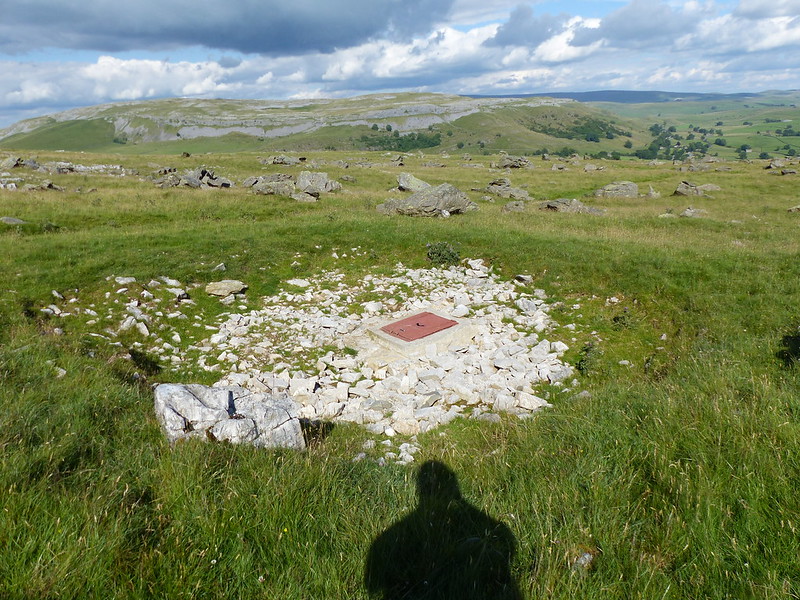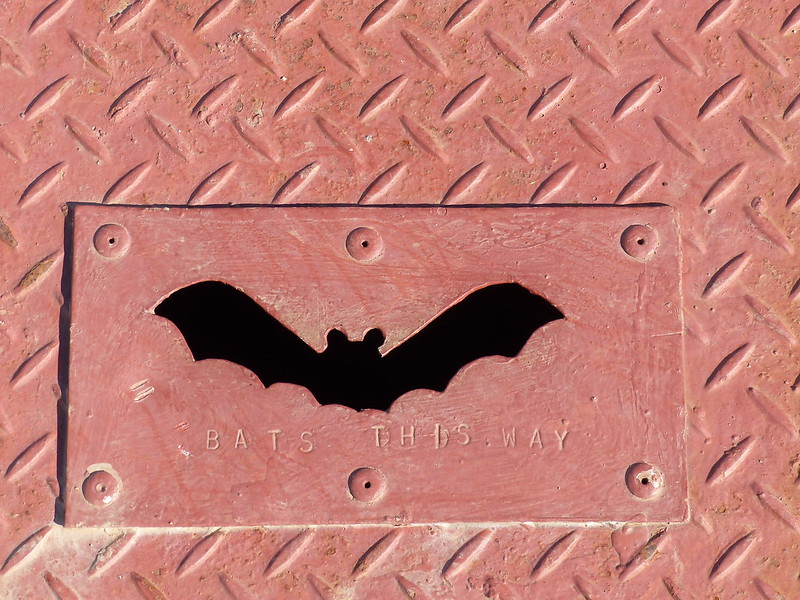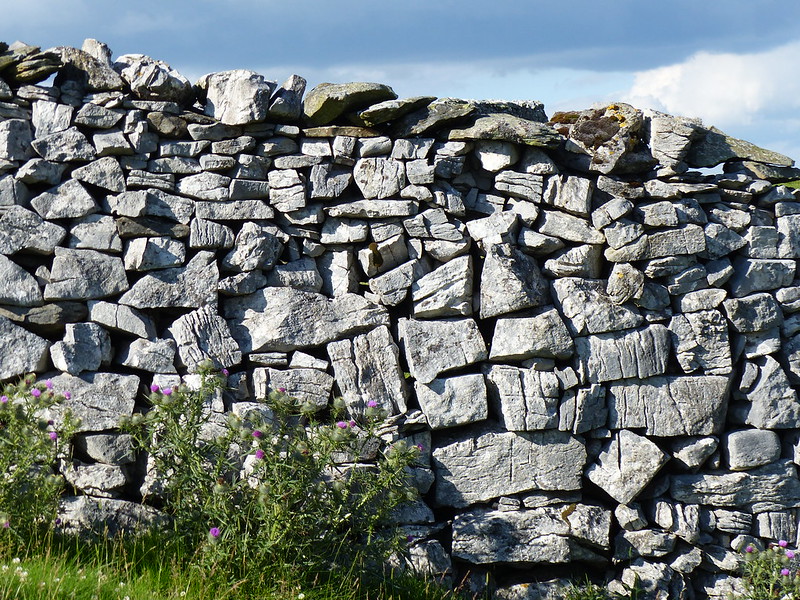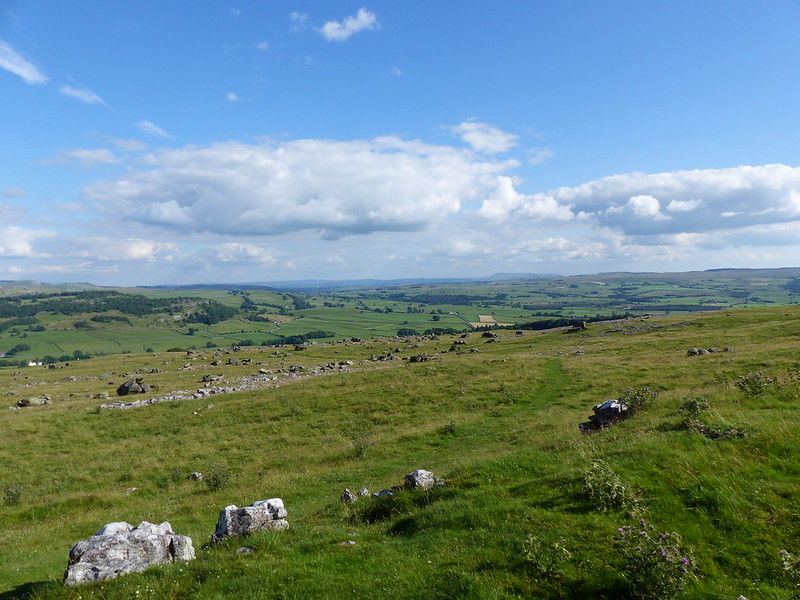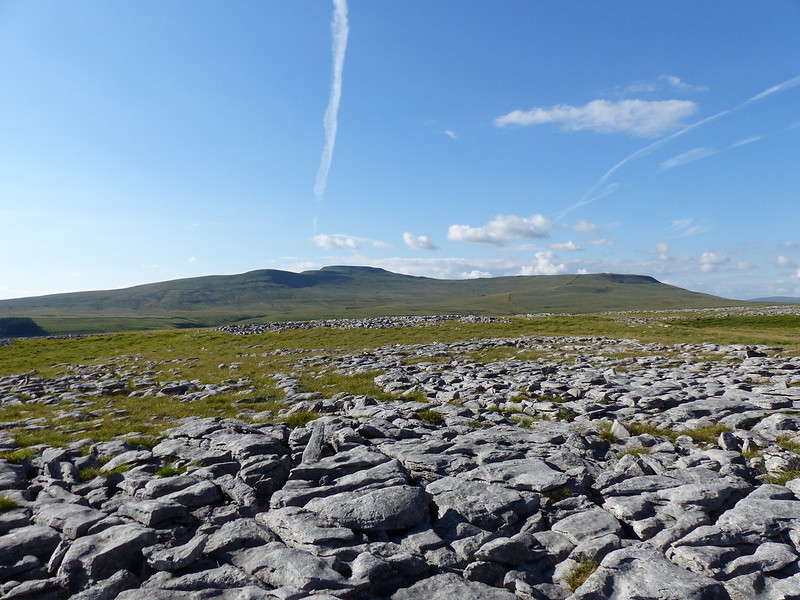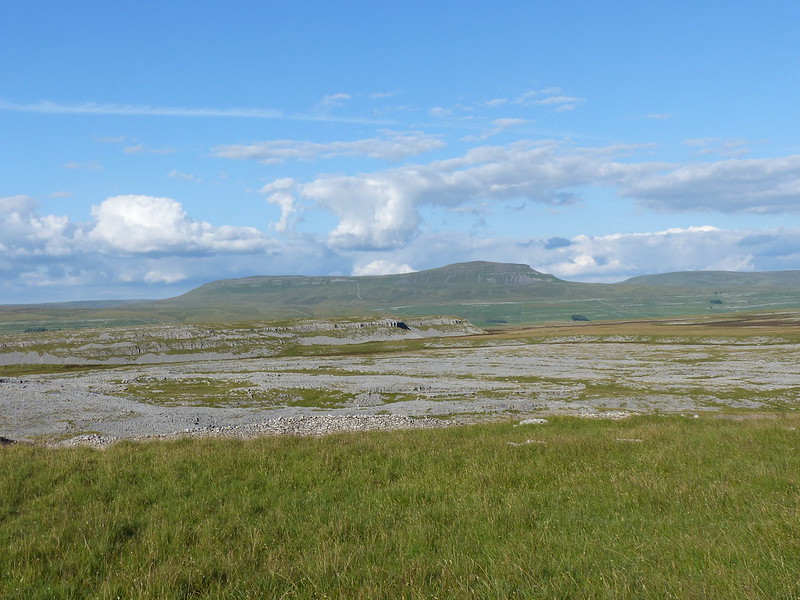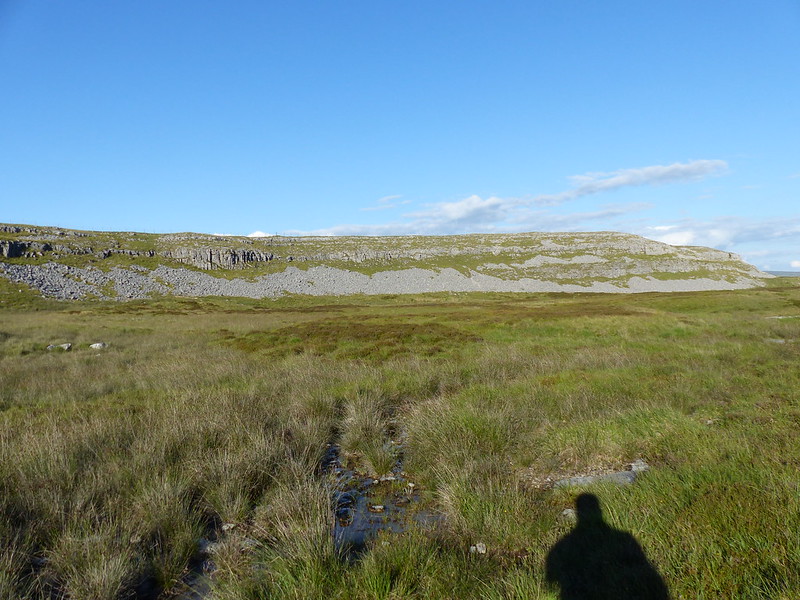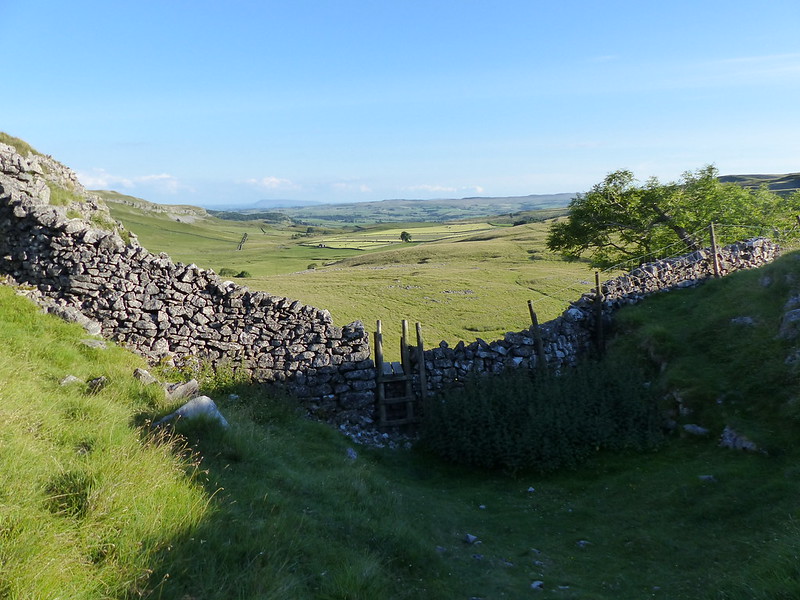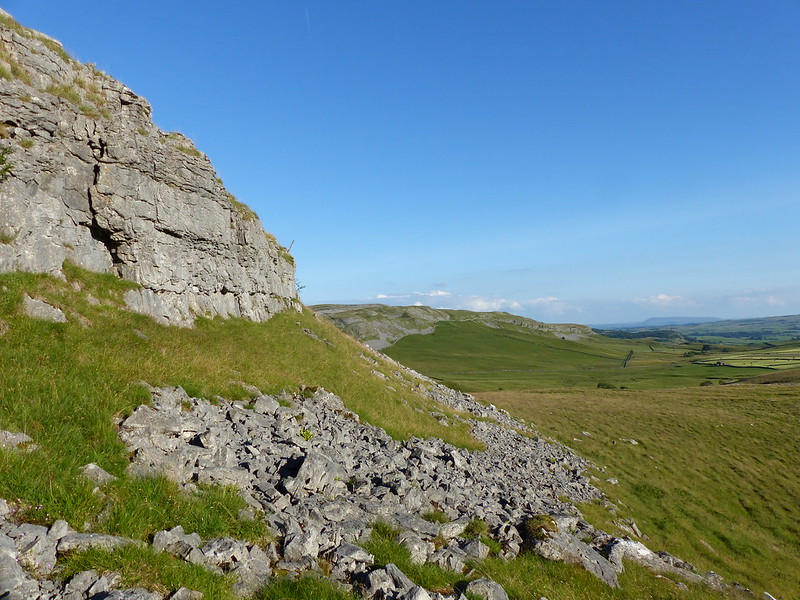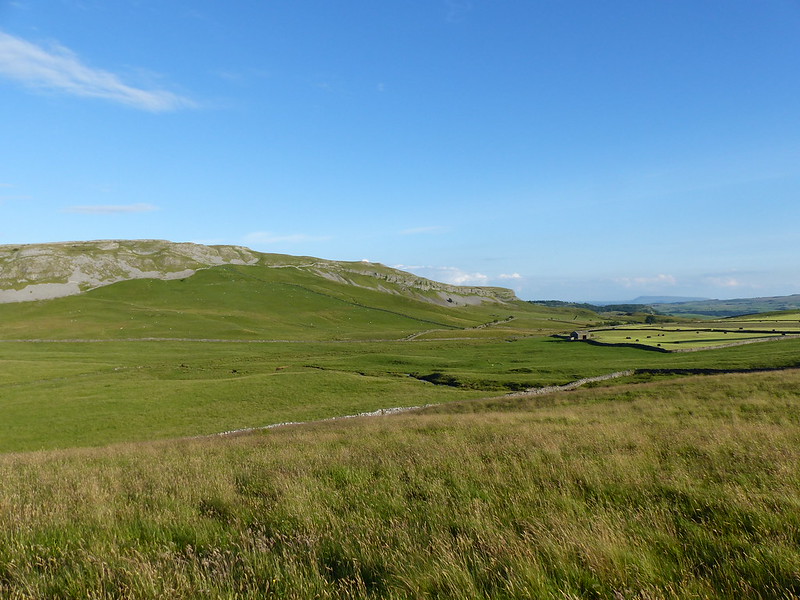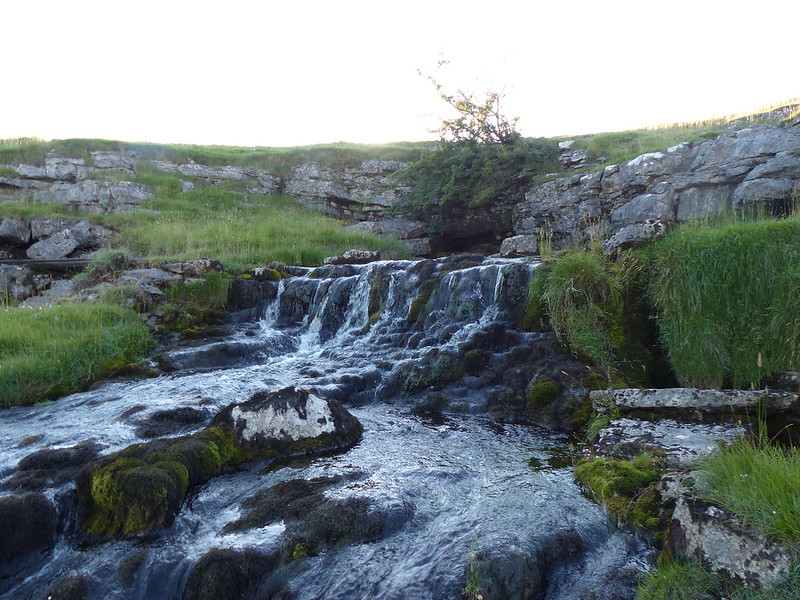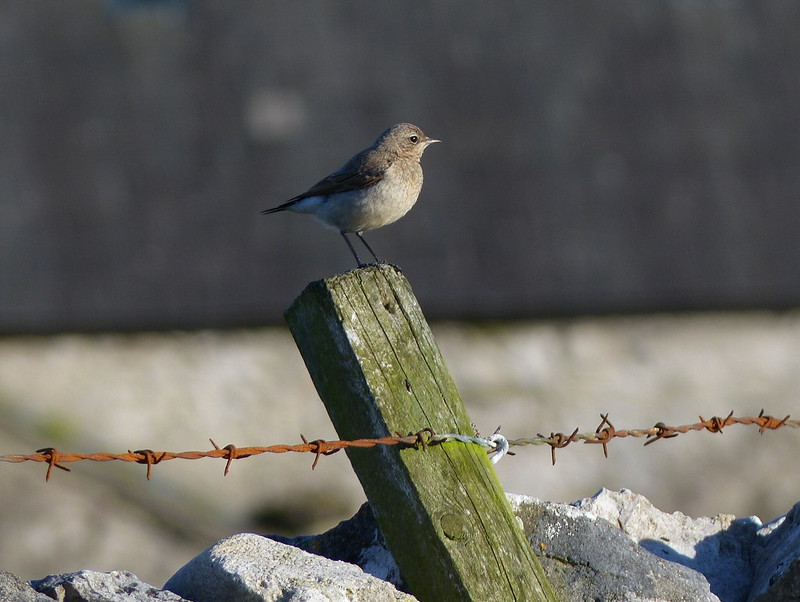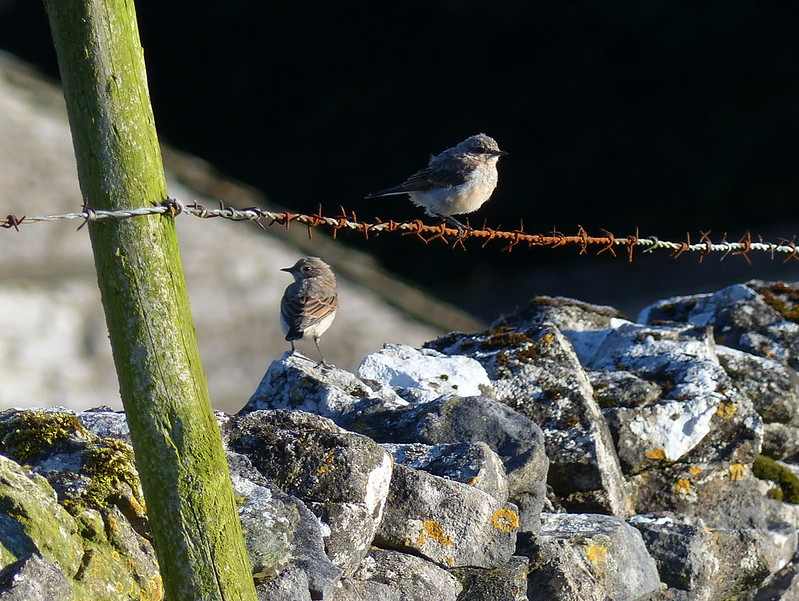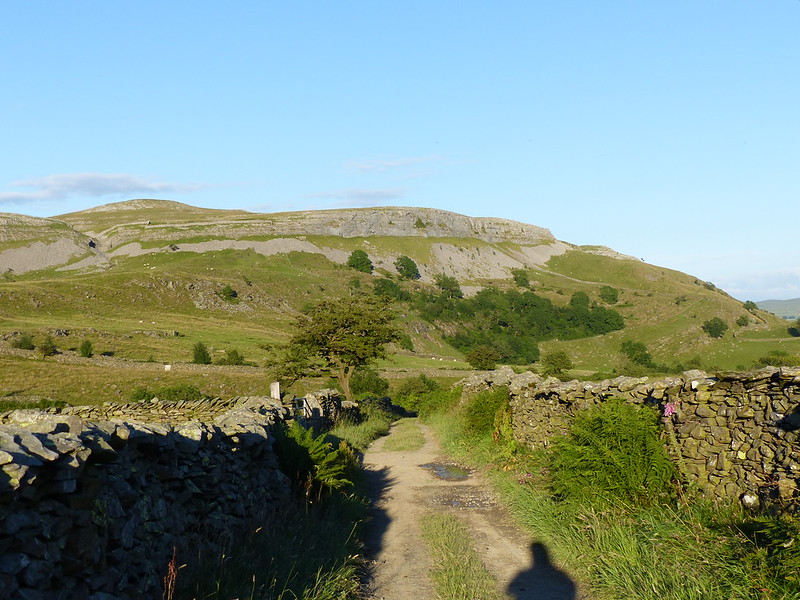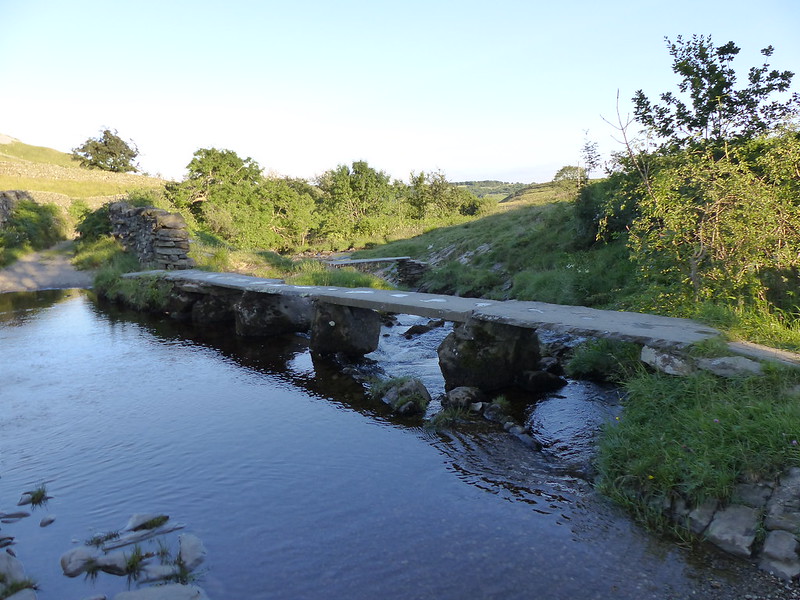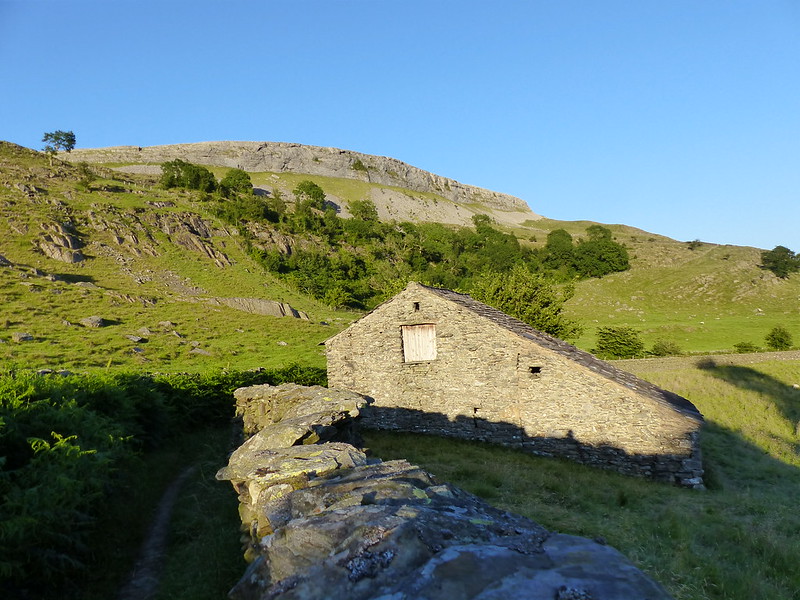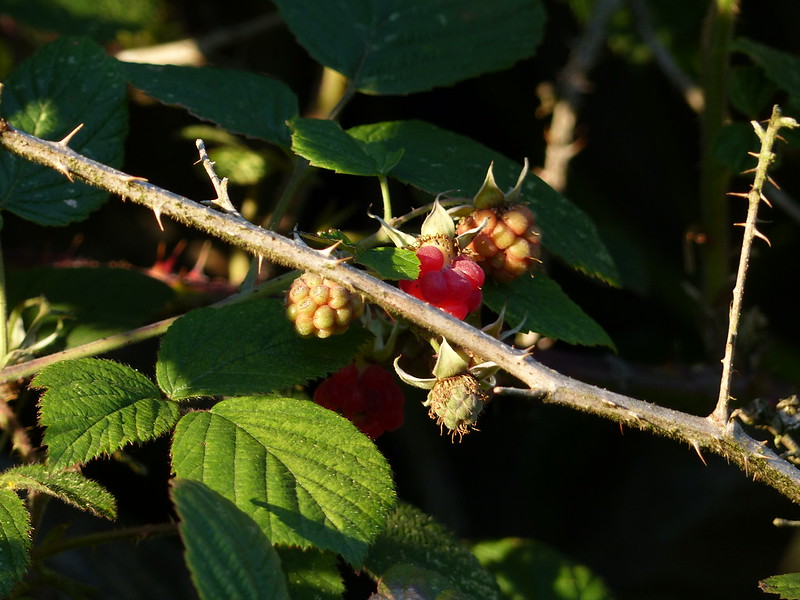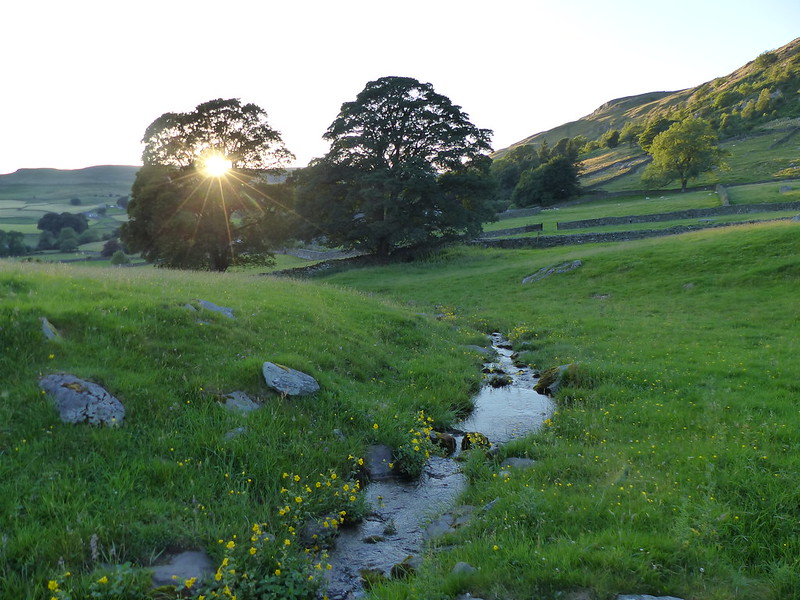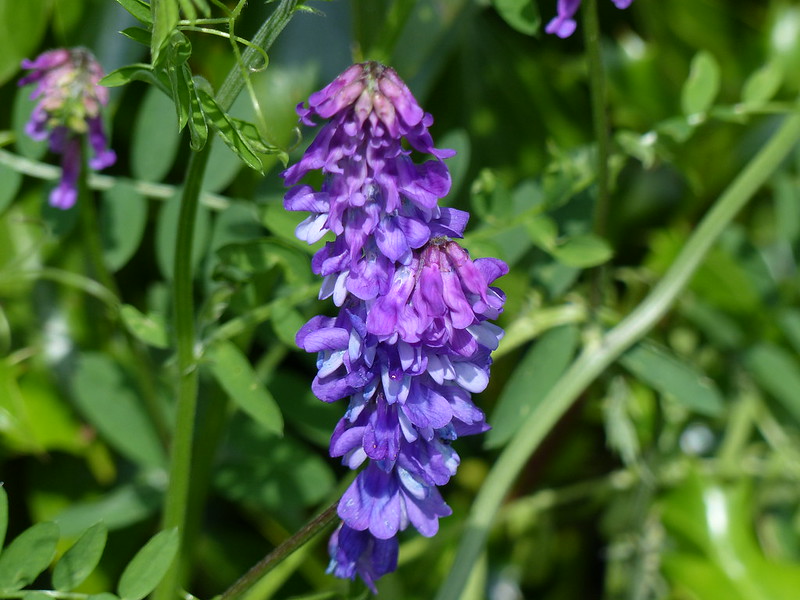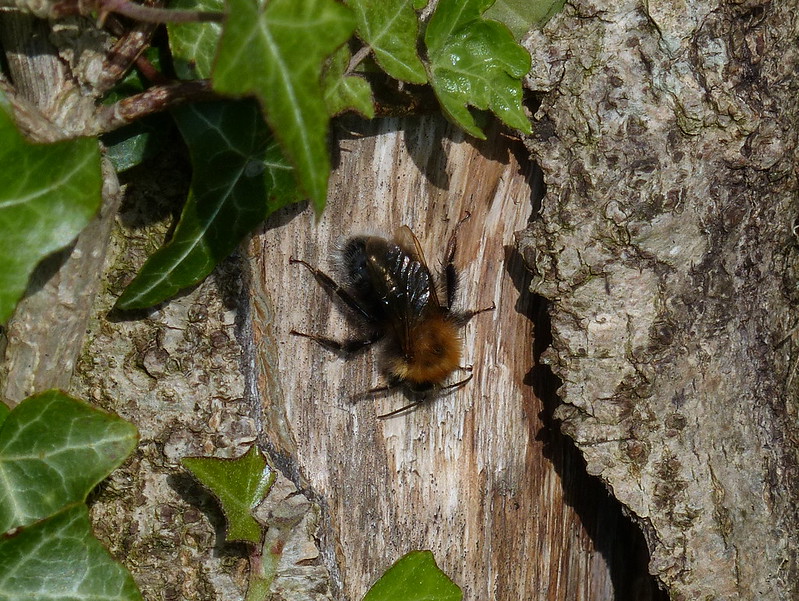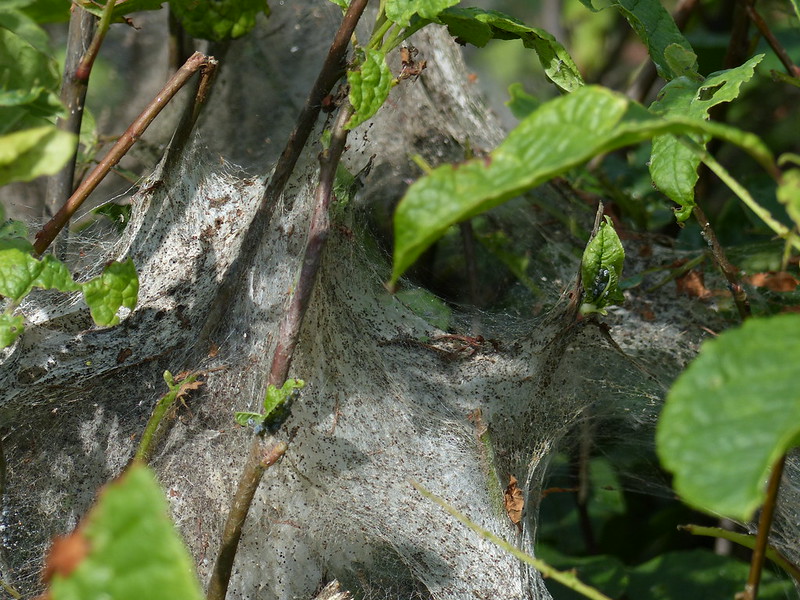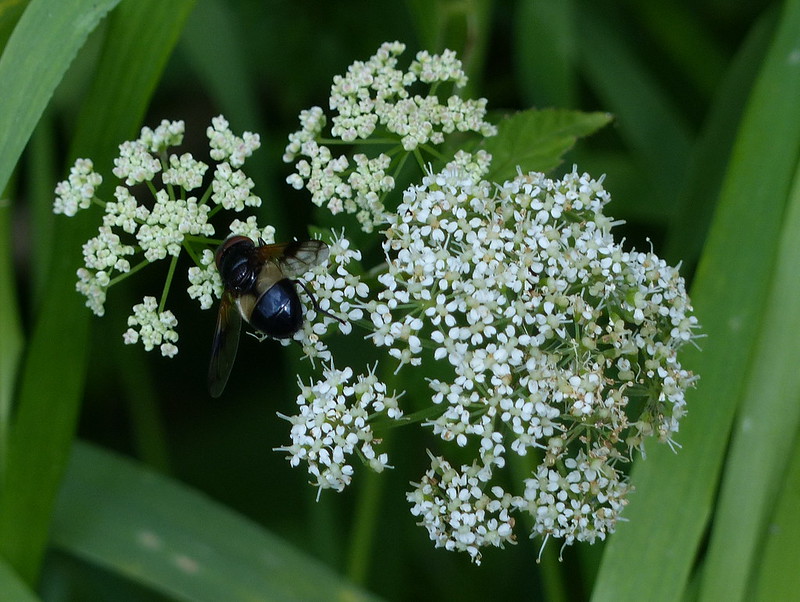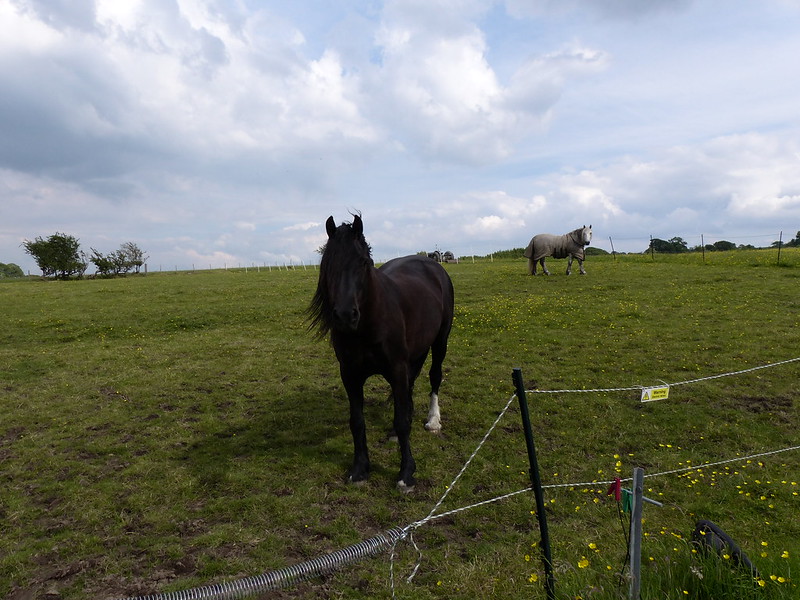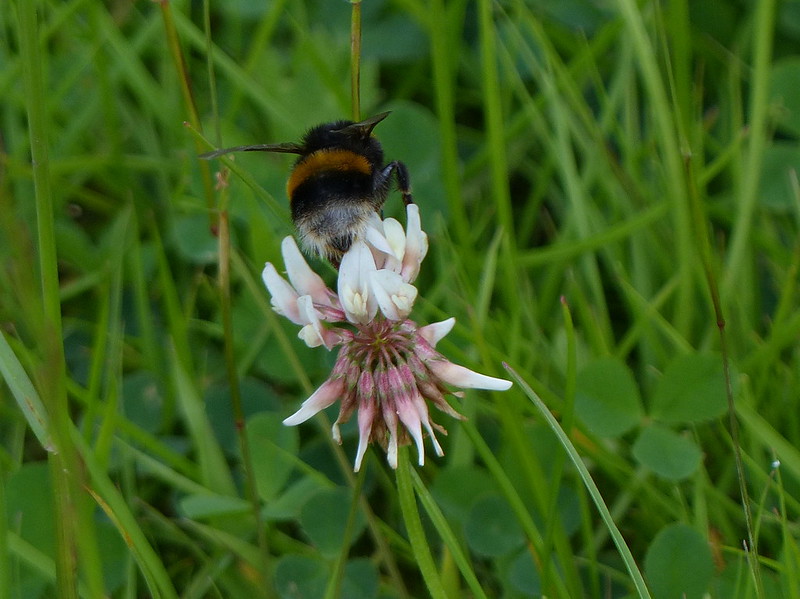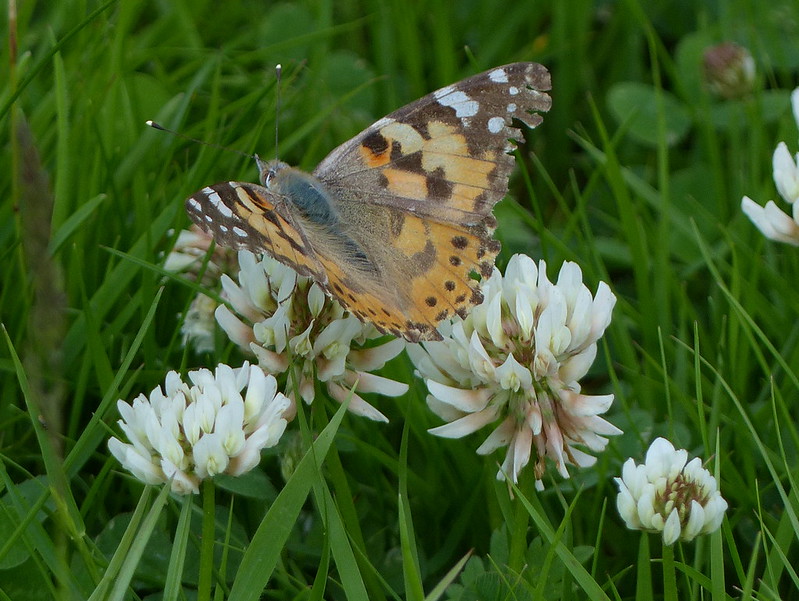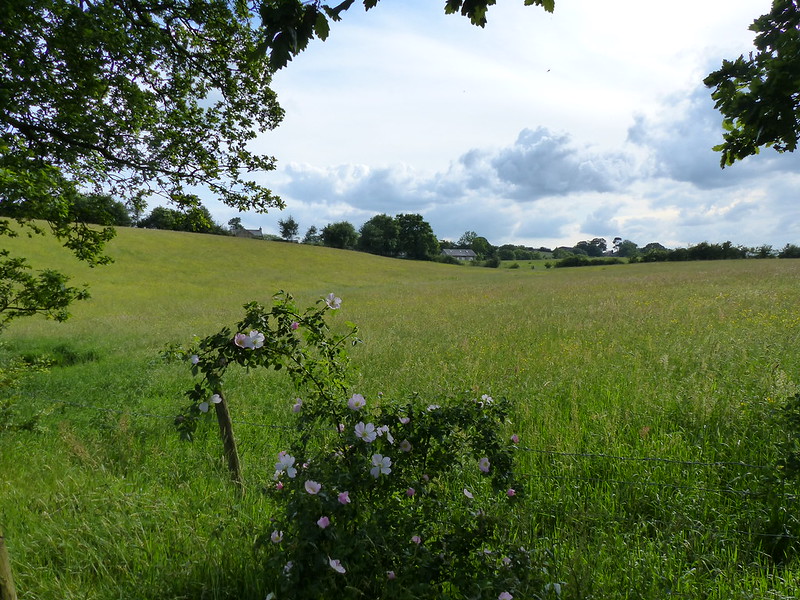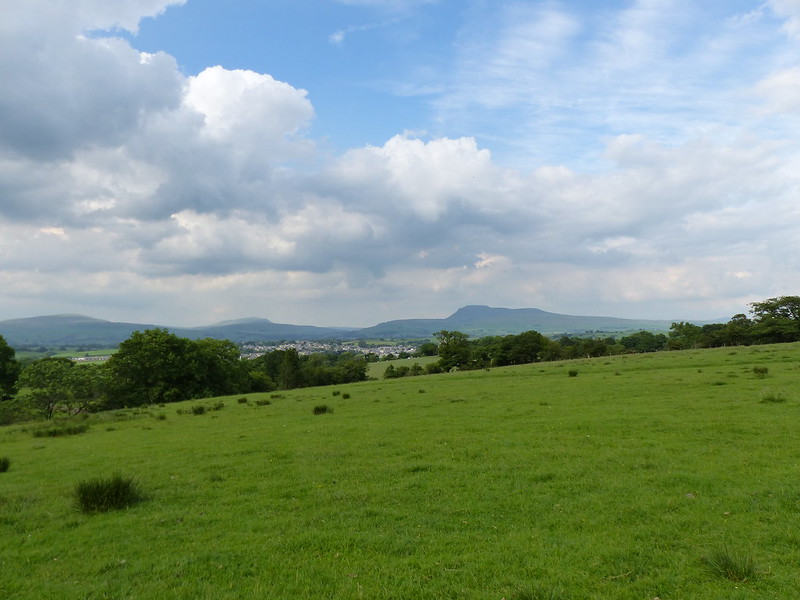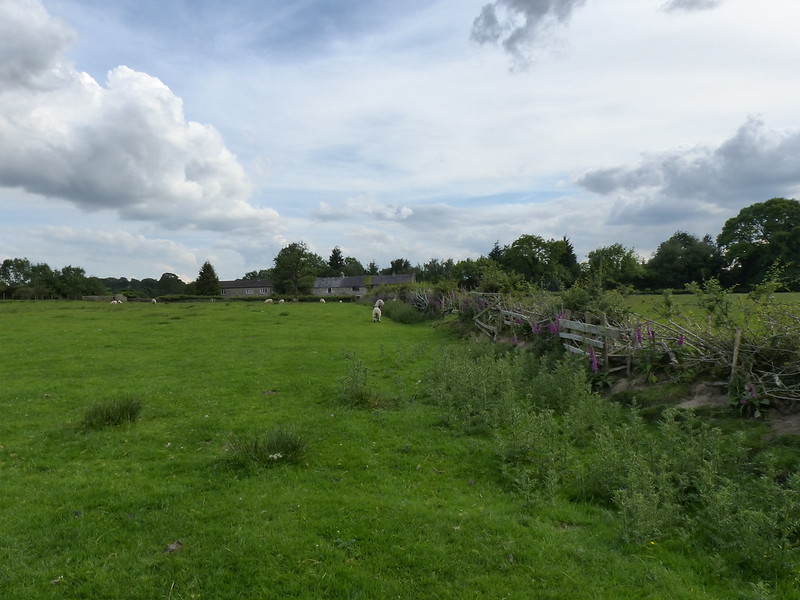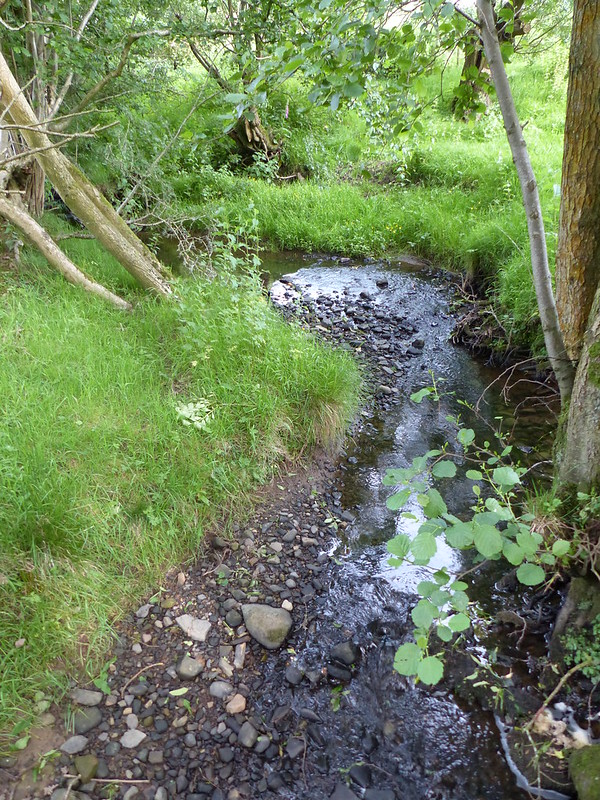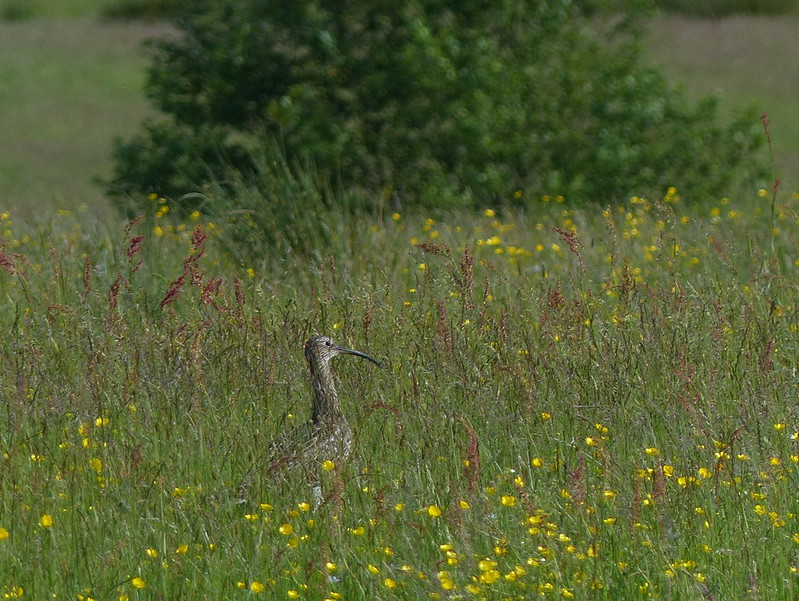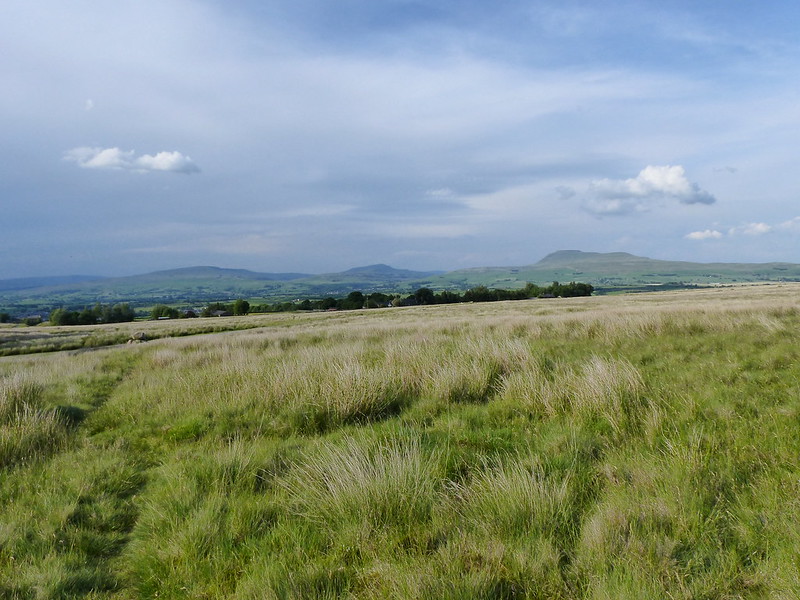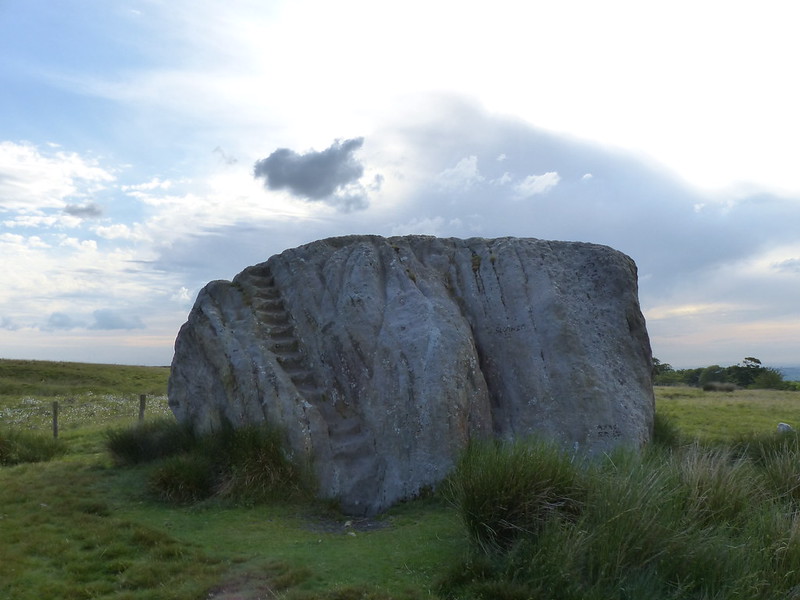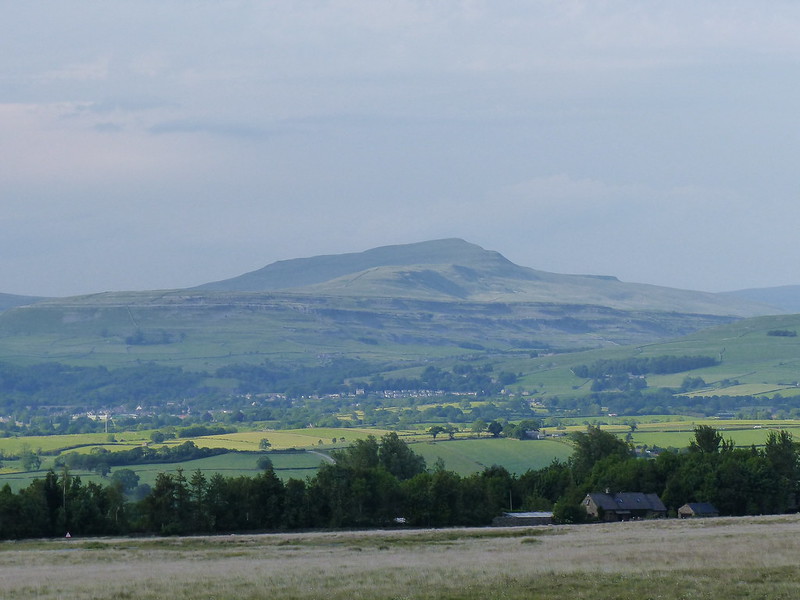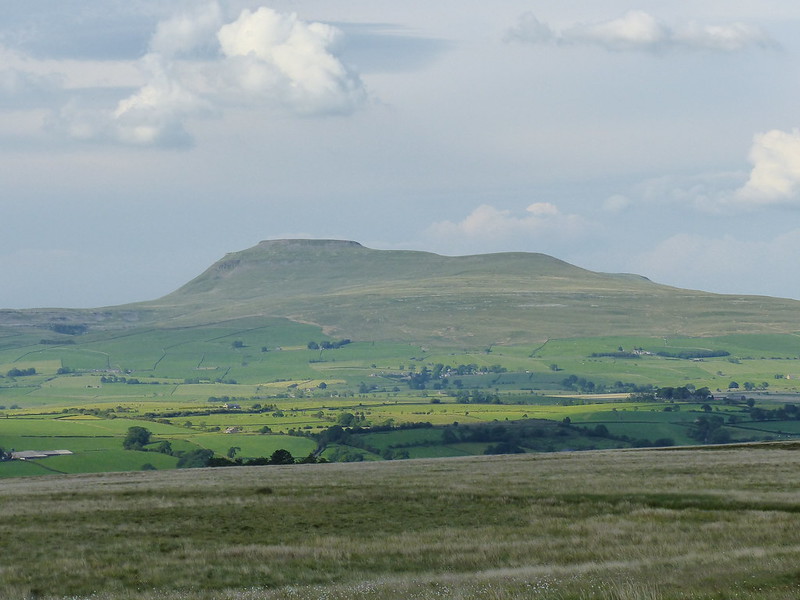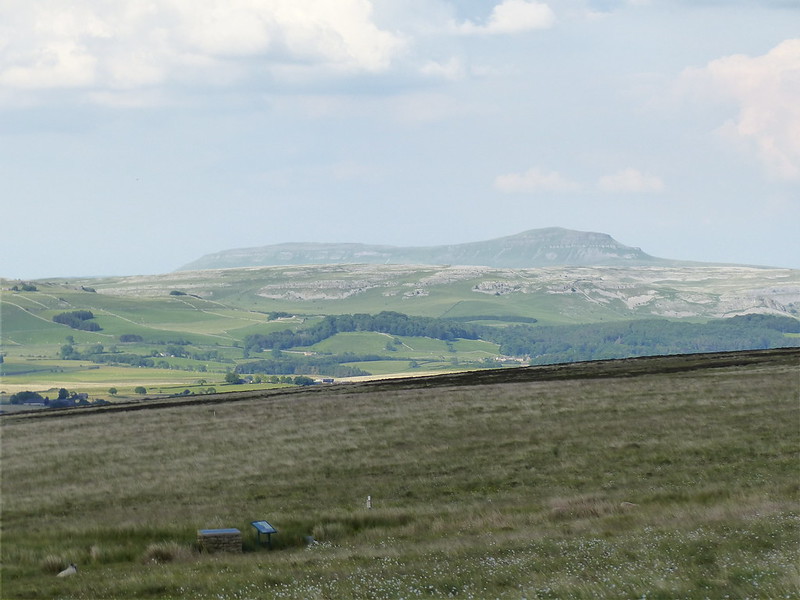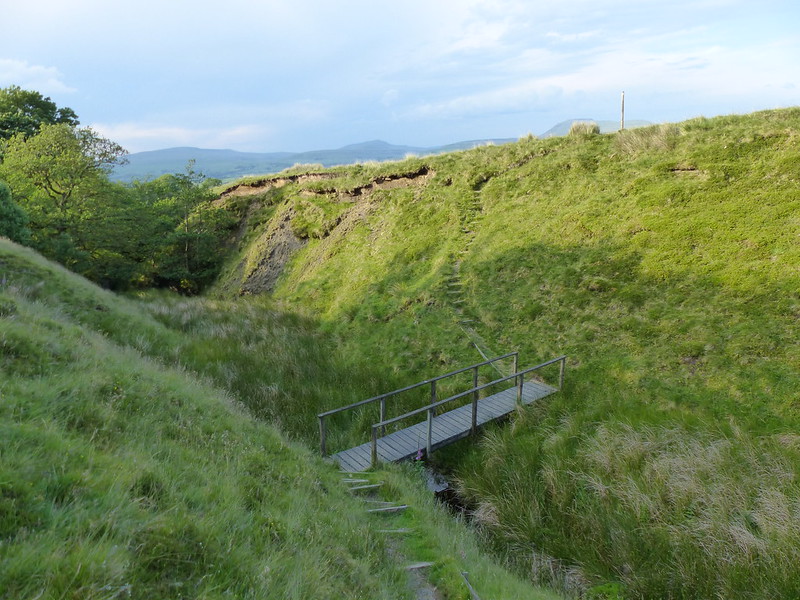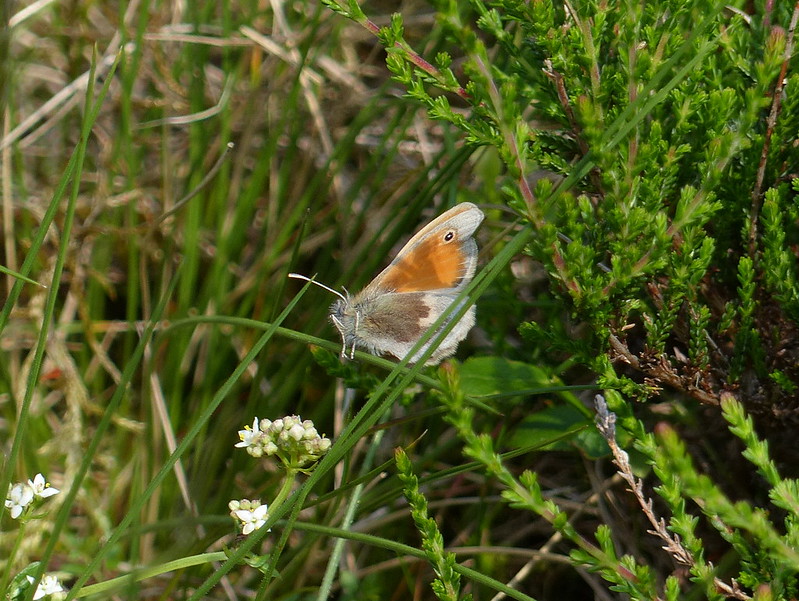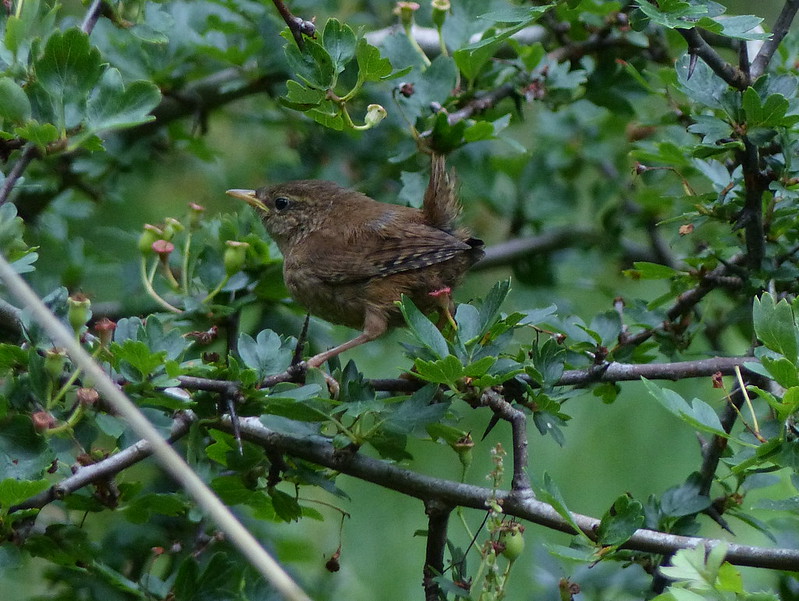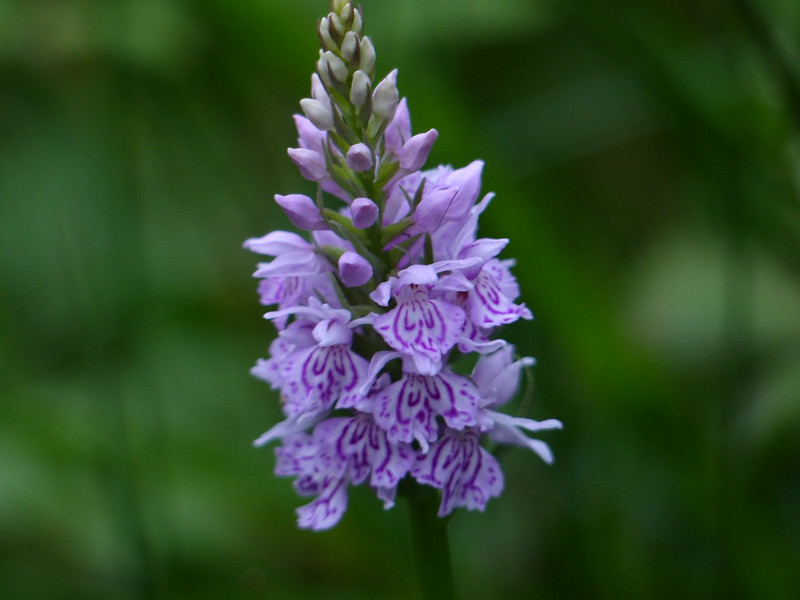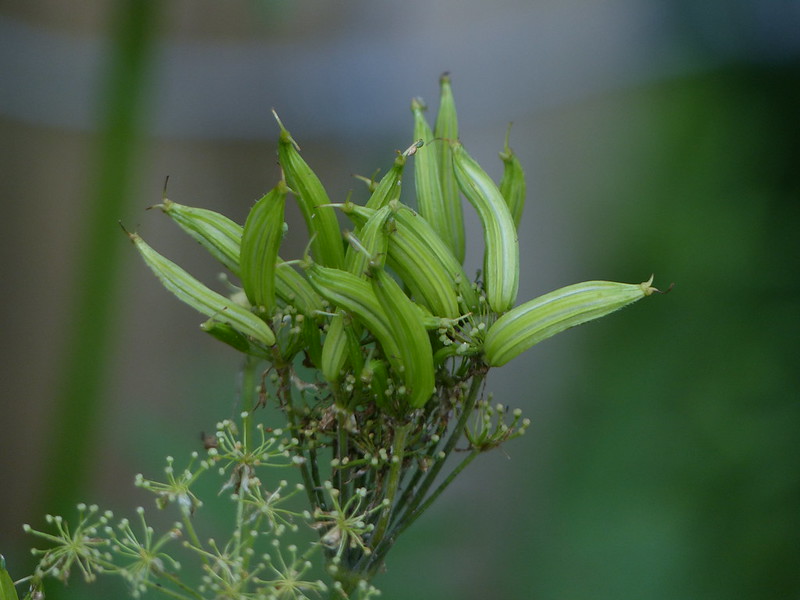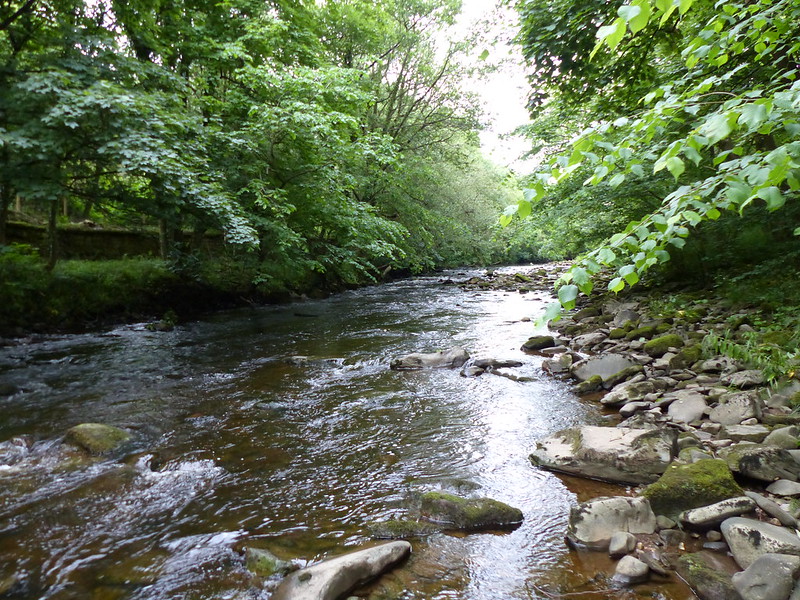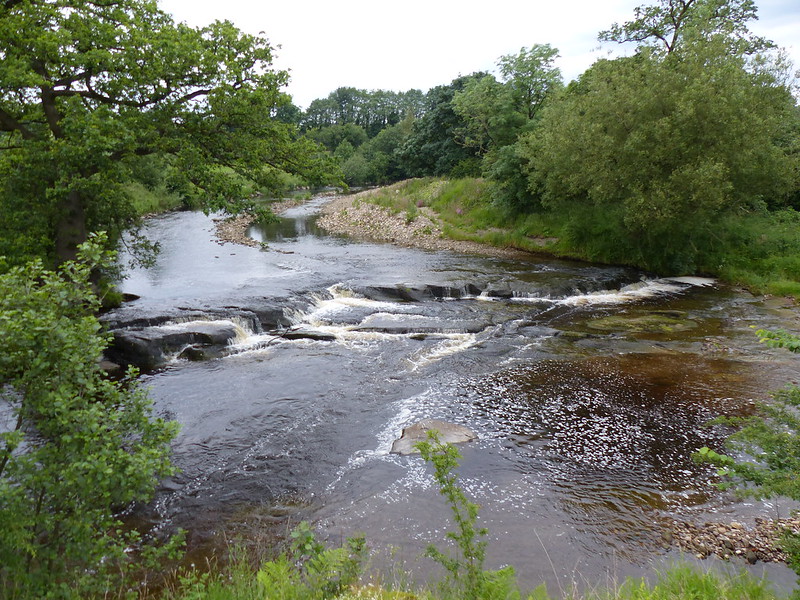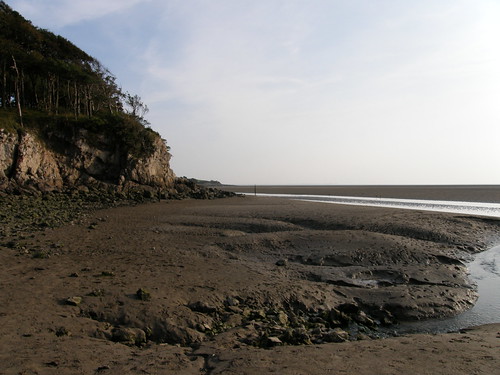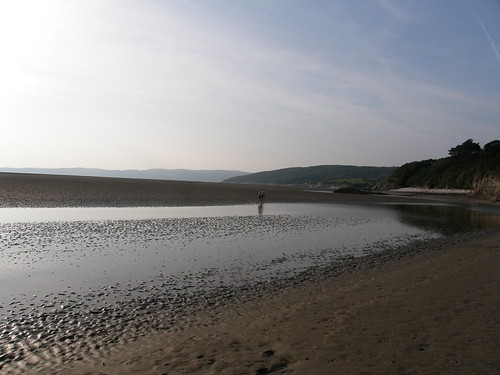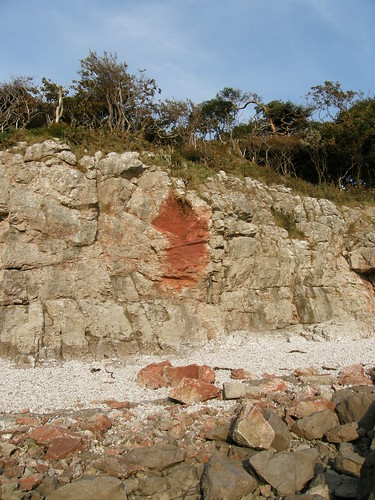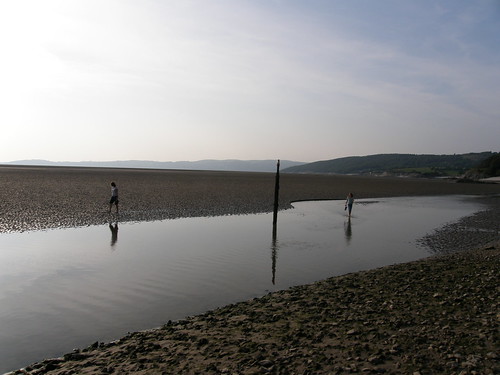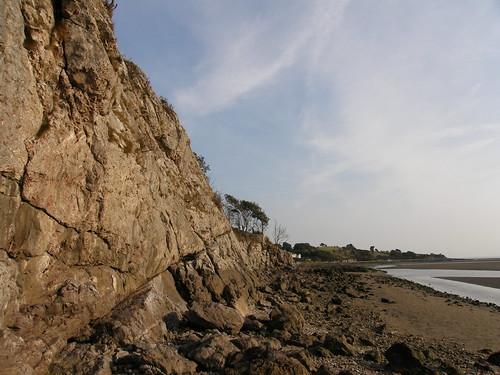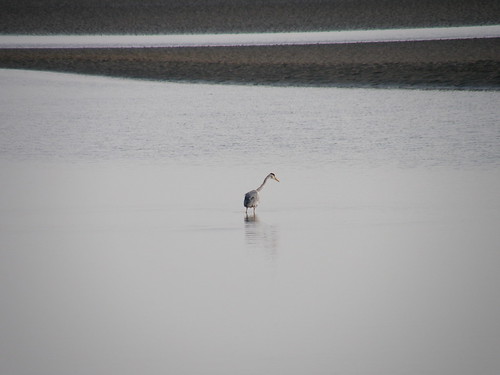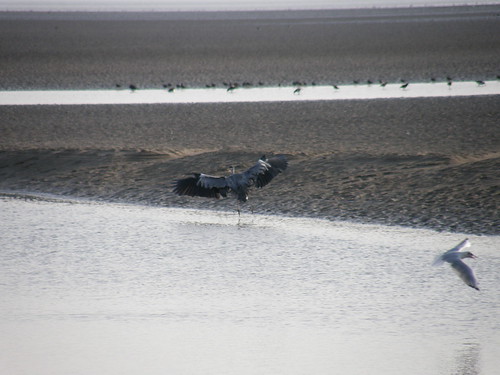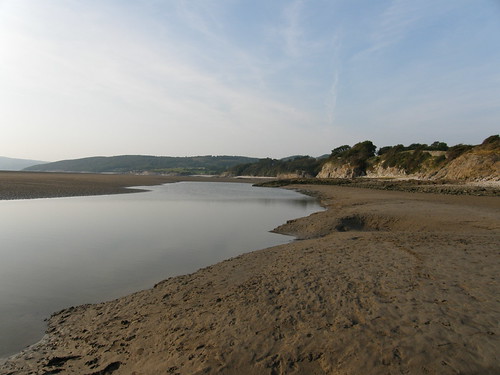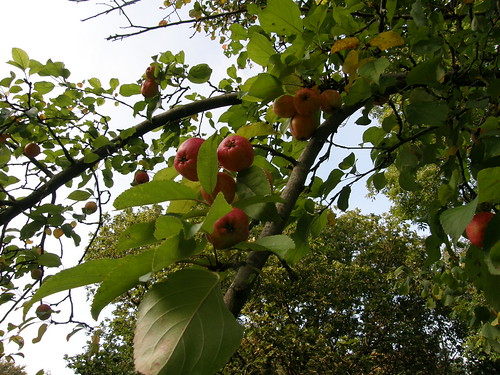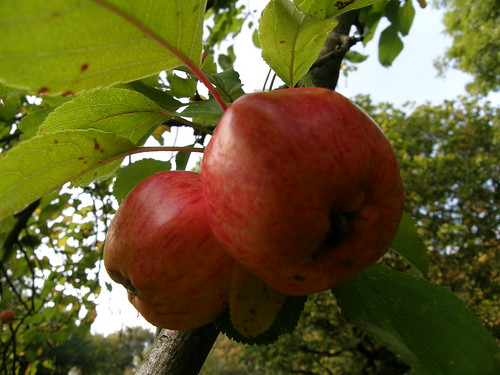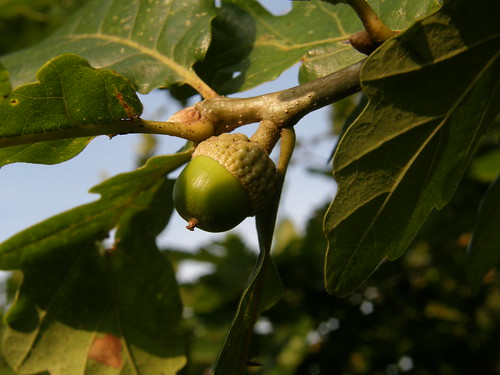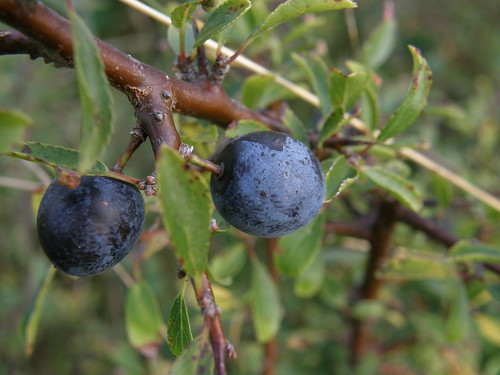Warton and Warton Crag behind.
Long-suffering readers of this blog may remember that there was a time when I worked one afternoon a week in Carnforth and a walk home from there was a weekly part of my commute. These days it’s not something I do very often, which is a shame because it’s a great walk, with numerous route options, all of them enjoyable.
On this occasion, one of the boys bikes need dropping off at the cycle shop for repairs; I can’t remember if this was when B had so completely buckled one of his wheels that it was beyond repair, or when the derailleur on S’s bike broke and his chain fell off.
“I put my chain by the path and somebody stole it!”
Later, when the whole family went to Trowbarrow to look for the ‘stolen’ chain, I asked, “Where exactly did you leave it?”
He pointed. Directly at a broken, black bike chain, which he apparently couldn’t see.
“Did you leave it beside this chain? Or could this be yours?”
“It wasn’t there earlier!”, he was adamant.
Anyway, I saw the opportunity to accompany TBH to the bike shop, and then to walk home afterwards.
After TBH dropped me off, I’d walked across the fields from Millhead to Warton and then climbed up to the Crag Road, where a stile gives access to the top of a lime kiln. The slight elevation of this spot gives some nice views…
Warton and a distant Ingleborough on the left.
Warton again and the Bowland Hills on the horizon.
A set of steps lead down beside the lime kiln…
So I had a wander down…
…to peer inside.
Another distant view of Ingleborough.
I followed the limestone edge up to the back of the large quarry car park and then headed on up to the top.
The Bay from near the top of Warton Crag.
It was a hot day and I dropped down from the top to my new favourite view point, where tree-clearance has exposed a small crag and some expansive views.
I sat for some time, drinking in the views as well as the contents of my water bottle. A buzzard coasted past. I’d already watched another hovering above the fields near Millhead.
Foxgloves.
Male Scorpion Fly. Is it holding a morsel of food?
Red Admiral.
A hoverfly – Platycheirus fulviventris – possibly?
Greenbottles.
I think that this striking fungi is a very dark specimen of Many-zoned Polypore or Turkeytail fungus.
This fungus varies enormously in colour. It generally grows on dead wood and is here devouring a tree stump.
Dog Rose.
Honeysuckle.
Hoverfly – Episyrphus Balteatus.
I was happily photographing roses and honeysuckle when an orange butterfly flew across the path, almost brushing my face as it passed. I tried to follow its flight, but soon lost it. I assumed it was a fritillary of some kind; I’m always disappointed if they pass without giving me a chance to identify them. Fortunately, a little further down the path, I came across another fritillary feeding on a red clover flower…
It’s a Dark Green Fritillary, exciting for me because I’ve only seen this species once before.
Common Blue Damselfly.
Cinnabar Moth.
A white-tailed bumblebee species on a Bramble flower.
Reflexed Stonecrop.
At Barrow Scout Fields, the gulls were making a fuss; it’s often worth a few moments scrutiny to see what’s upsetting them. I’m glad I stopped this time…
At first I assumed that I’d spotted a Marsh Harrier with a gull chick, but only one gull gave chase, and that half-heartedly, and the gulls are usually extremely energetic when mobbing the resident harriers. Anyway, I could soon make out that the raptor was carrying quite a large fish. It seemed likely that it was an Osprey, which the photo confirms. It made a beeline northwards, presumably heading back to the nest at Foulshaw Moss, on the far side of the River Kent. The nest has webcams stationed above it and I’ve been following the progress of the nesting pair and their two chicks online, so was doubly pleased to see one of the parent birds with what looks to me like a good sized family take-away.
I’m, intrigued by the fish too. Barrow Scout Fields were three agricultural fields until they were bought by the RSPB in 2000 and restored as wetlands. Have the RSPB stocked the meres they created with fish I wonder, or have fish eggs arrived naturally, on the feet of wading birds for example? Whichever is the case, the fishing Osprey and its large prey are surely testament to the charity’s successful creation and management of this habitat.
I hadn’t moved on from watching the disappearing Osprey, before another drama began to unfold in the skies overhead…
Two raptors this time, with one repeatedly nose-diving the other. The slightly smaller bird, the aggressor, is a Marsh Harrier, a female I think, which is probably defending a nest in the trees at the edge of Leighton Moss.
The agility of the other bird, a Buzzard, which repeatedly flipped upside-down so that it could face its attacker, was astonishing.
I have no sympathy with the Buzzard, since I’ve been subjected to similar dive-bombing attacks by Buzzards on several occasions. This went on for quite some time and I took numerous photos; I was royally entertained.
Looking across towards Leighton Moss.
I peeked over the bridge here to peer into the dike running alongside the Causeway Road and saw a Water Forget-Me-Not flowering in the middle of the dike. Sadly, it was in deep shade and my photo has not come out too well. I shall have to revisit.
Yellow Flag Iris.
Unnamed tributary of Quicksand Pool.
Spear-leaved Orache.
Sea Beet, with flowers…
Both sea beet and orache (in its many guises, there are several British species) are prized as spinach substitutes by foragers. I really must get around to trying them both.
Quicksand Pool.
A roof finial (I think that’s the right term) at Jenny Brown’s cottages. I’m surprised I haven’t photographed it before.
Speckled Wood butterfly.
This seemed to be the day which just kept on giving: after the dark green fritillary, the osprey, the aerial battle between the harrier and the buzzard, one last gift – a group of Eider Ducks resting on the sands at the edge of Carnforth Salt Marsh. I’ve seen Eiders here before, but not often. It was a shame they were so far away, but when I tried to get closer they swam away.
Oystercatchers.
Quicksand Pool and Warton Crag.
Looking along the coast to the Coniston Fells.
Another Dog Rose at Jack Scout.
Large Skipper female.
Curled Dock (I think).
Named for its curly leaves.
If I’m right, then these flowers will turn red then eventually brown.
Curled Dock is yet another spinach substitute apparently, crammed with vitamins.
Hedge Woundwort.
The mystery vigorous plant in Woodwell pond is revealed to be Arum Lily or Calla Lily.
A non-native relative of our own Cuckoo Pint – the showy white part is a spathe not petals.
Close to home and a distant view of the Howgills on the horizon.
A lovely walk of a little under eight miles – who’d believe so much interest could be crammed into one short stroll?
Now, if your patience isn’t completely exhausted, some fishing songs. First up, a tune I’ve always liked:
This one, is actually ‘Sufficient Clothes’ but was released as ‘Fishing Clothes’ after a Lightnin’ Hopkins was misheard.
Listening to it again, it turns out there’s not too much fishing in this one either:
But it is by the late, great Tony Joe White. Seems I don’t actually know many songs about fishing after all.

